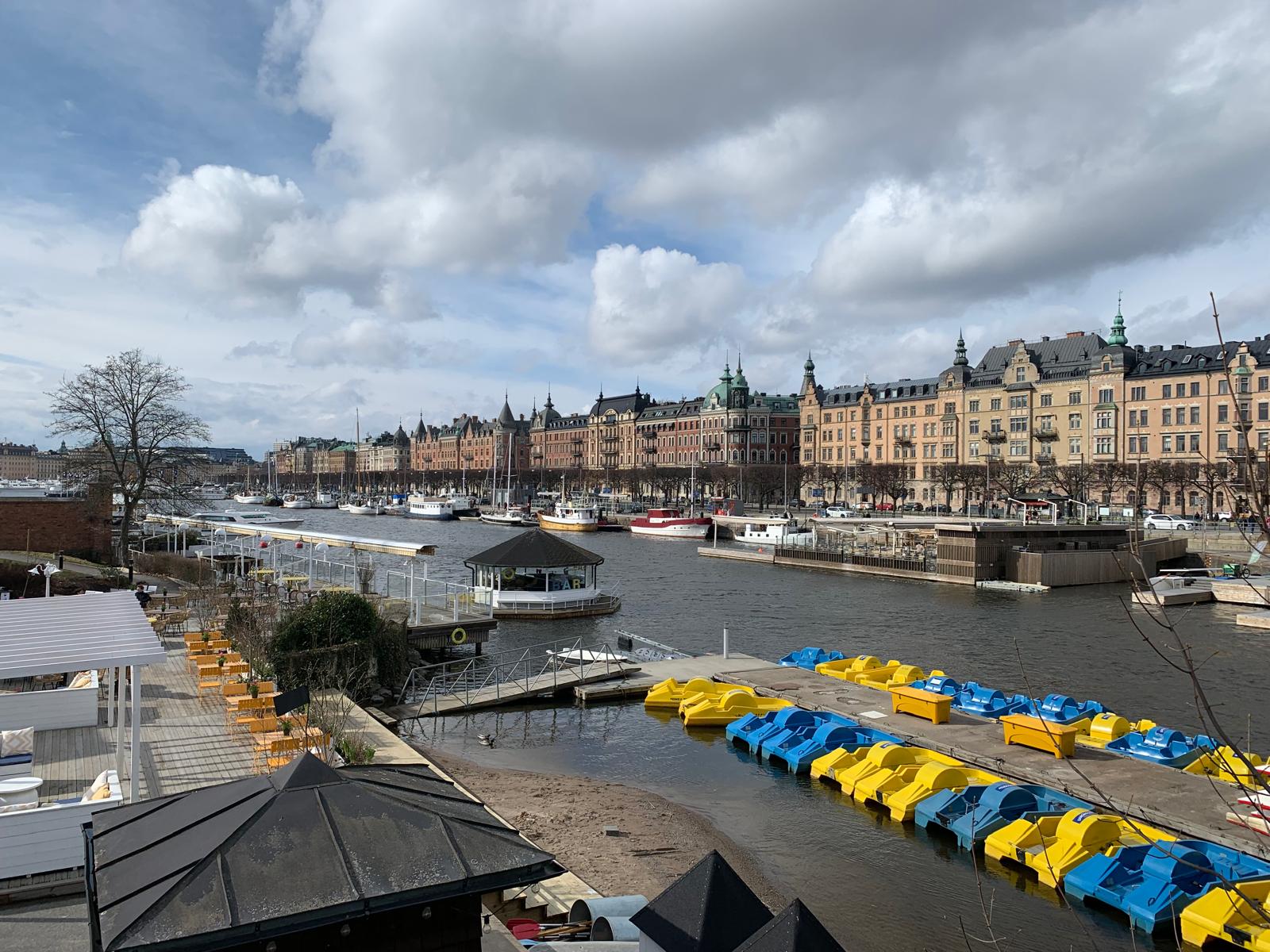Stockholm For Culture Lovers – A Long Weekend Guide
A long weekend in Stockholm is a perfect opportunity to learn about this archipelago capital’s history, experience some culture, and balance out all that activity with the local traditions of fika and sauna.
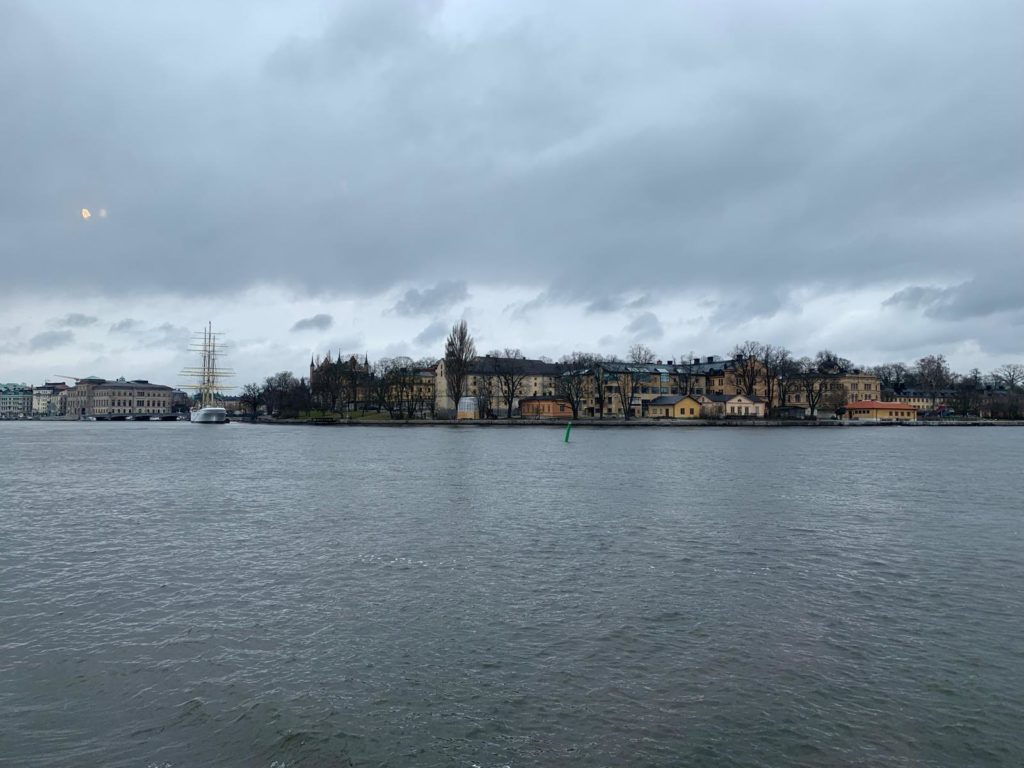
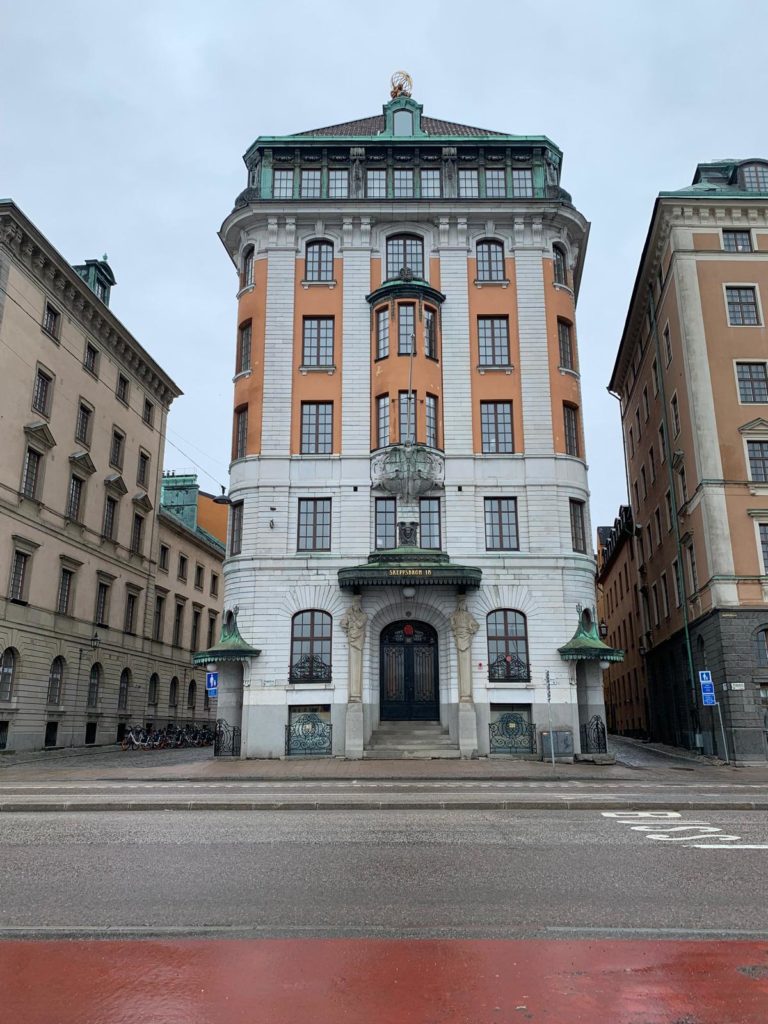
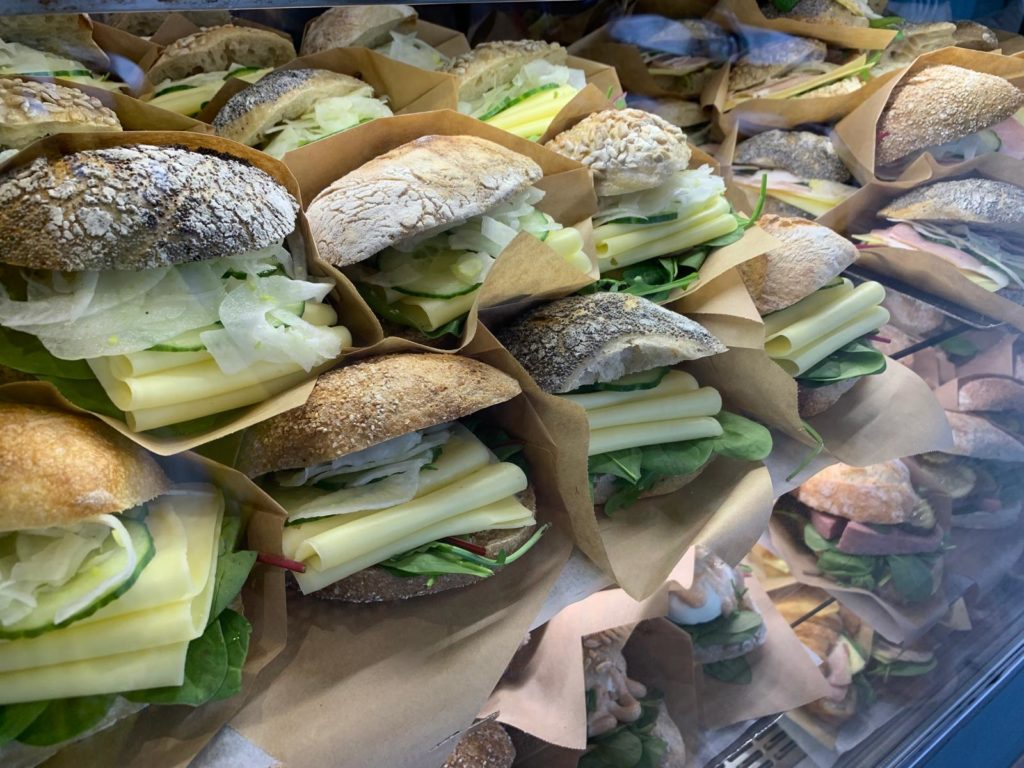
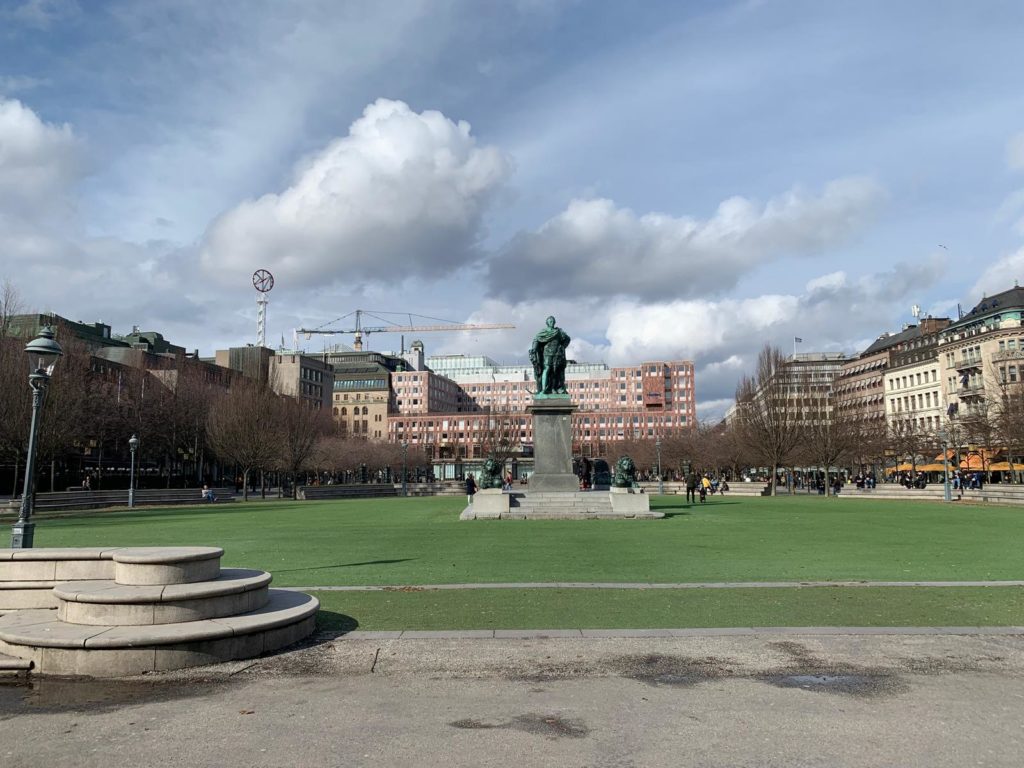
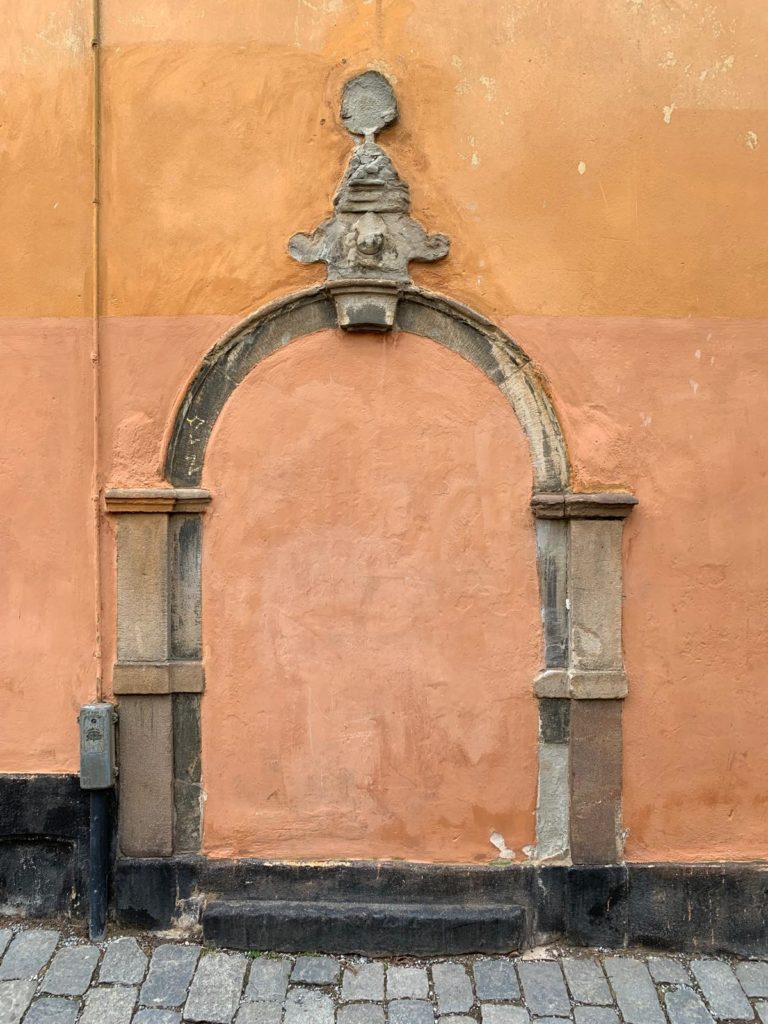
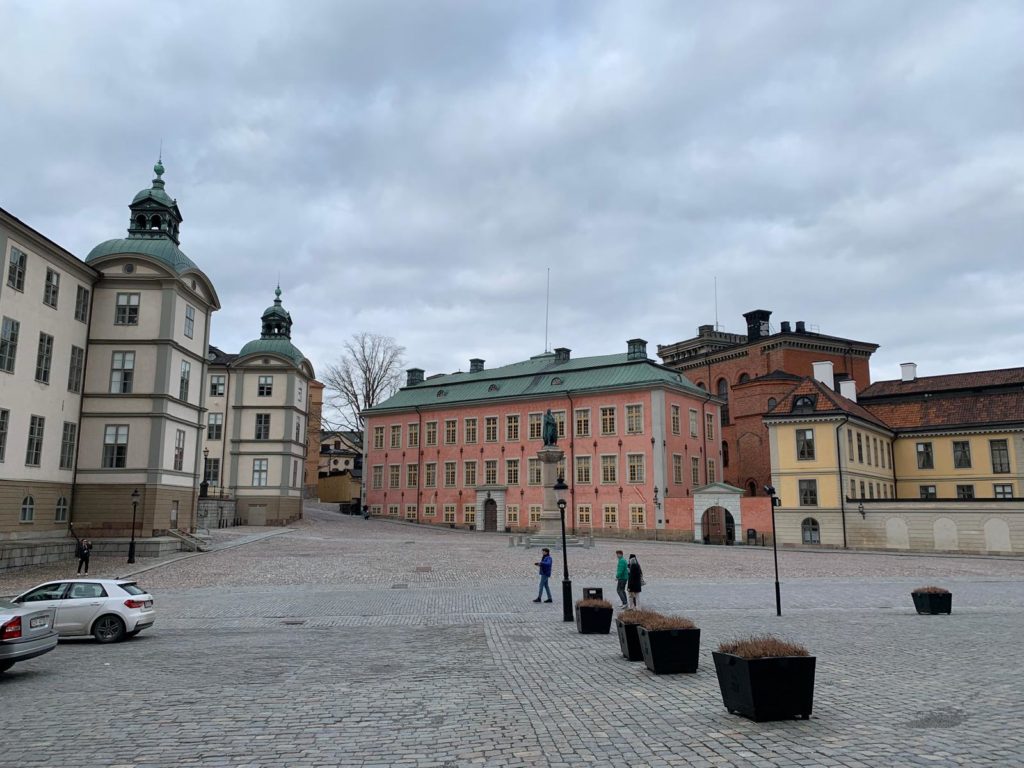
A Long Weekend in Stockholm
I don’t know why I hadn’t been to Sweden before. Too many places to go and too little time, I suppose. But after only a few days in Sweden’s capital, I started to feel at home. It’s an easy city to get around, packed full of interesting sights, and with a vibrant bar and restaurant scene when it’s time to refuel.
And more than that, it’s a place which encourages relaxation and mindful tourism. Those who have read my travel guides before will know that I tend to pack too much in if left unattended (here is the worst example!). In Stockholm, on the other hand, I got into the habit of taking a mid-afternoon sauna break to revitalise my tired legs and relax before evening activities. There’s something about the fresh air, pleasant landscapes and nearby islands which had me instantly questioning my busy city lifestyle.
Before we take a look at what to do in Stockholm, we’re going to learn a little bit about the city’s history. Then it’s straight into the sights, before we finish up with guides to fika, sauna, and what to eat and drink on your travels. And a small note on timing: my long weekend in Stockholm was over Easter. This was a nice time to visit. Some activities (like dinner cruises) were just opening up for the season, and most museums and other sights were open albeit with public holiday hours. Restaurants were perhaps a little harder to book than usual as several were closed, but overall it was a good choice for an Easter getaway.
And now on to a history of Stockholm and some recommendations: enjoy!
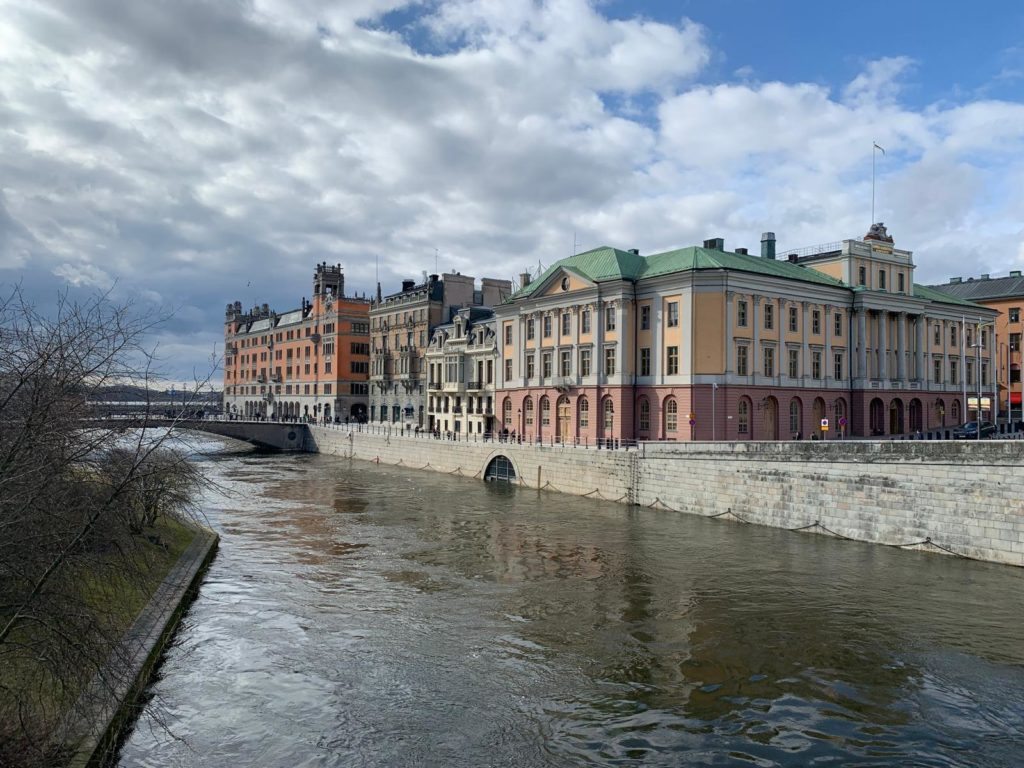
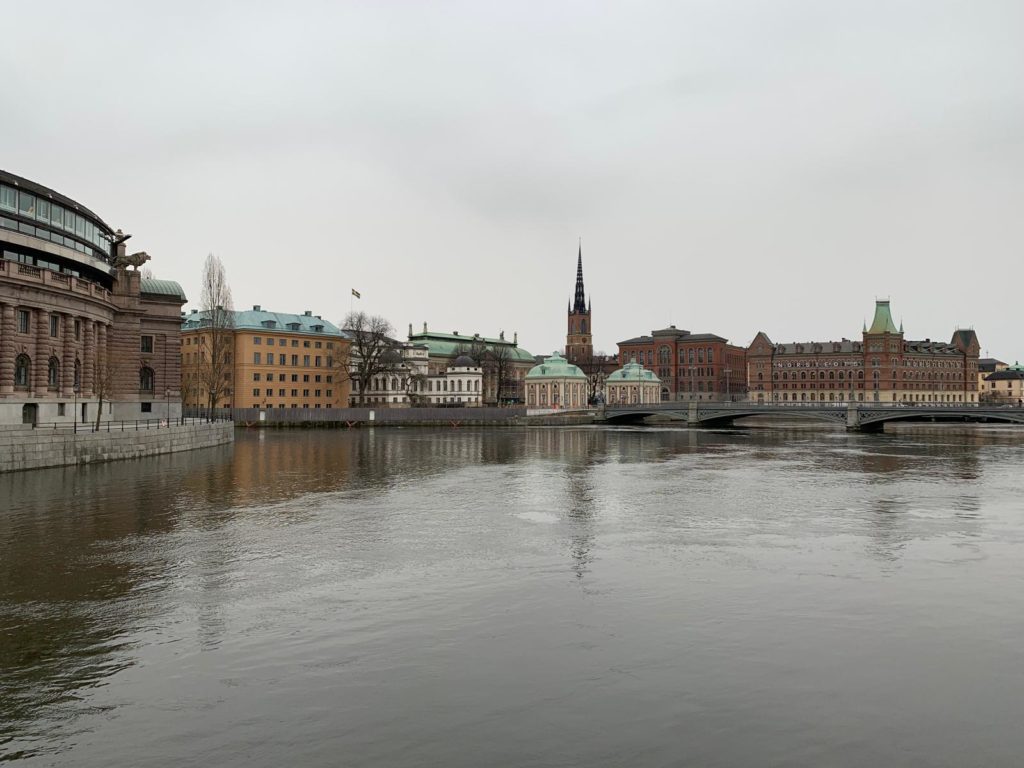
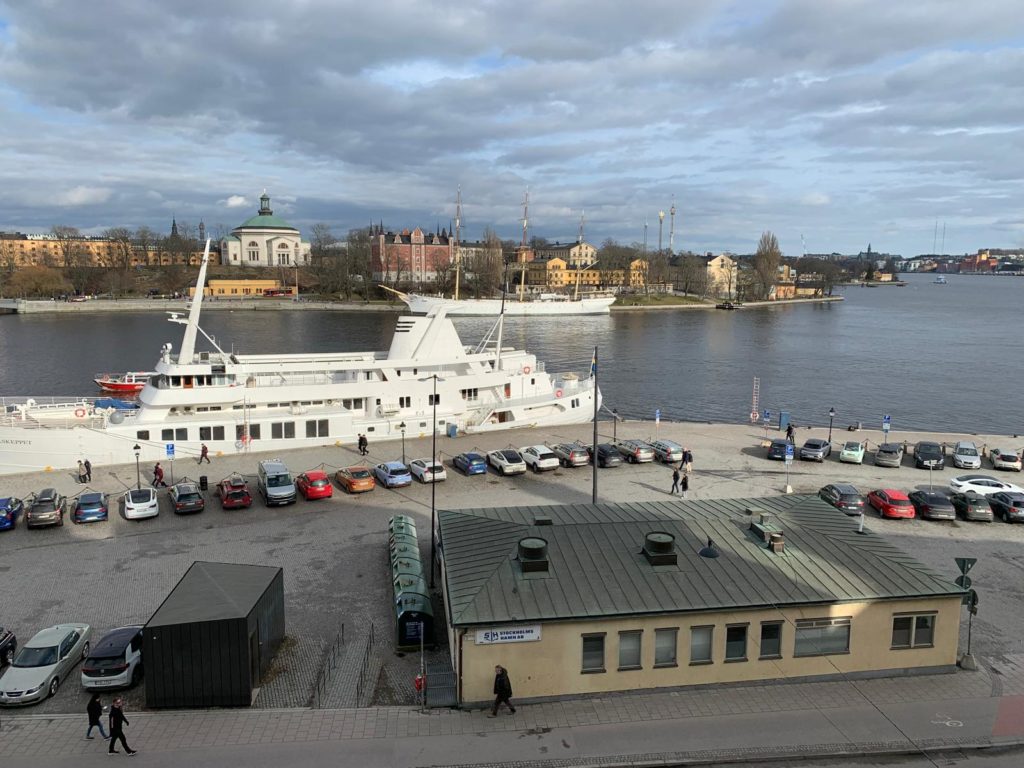
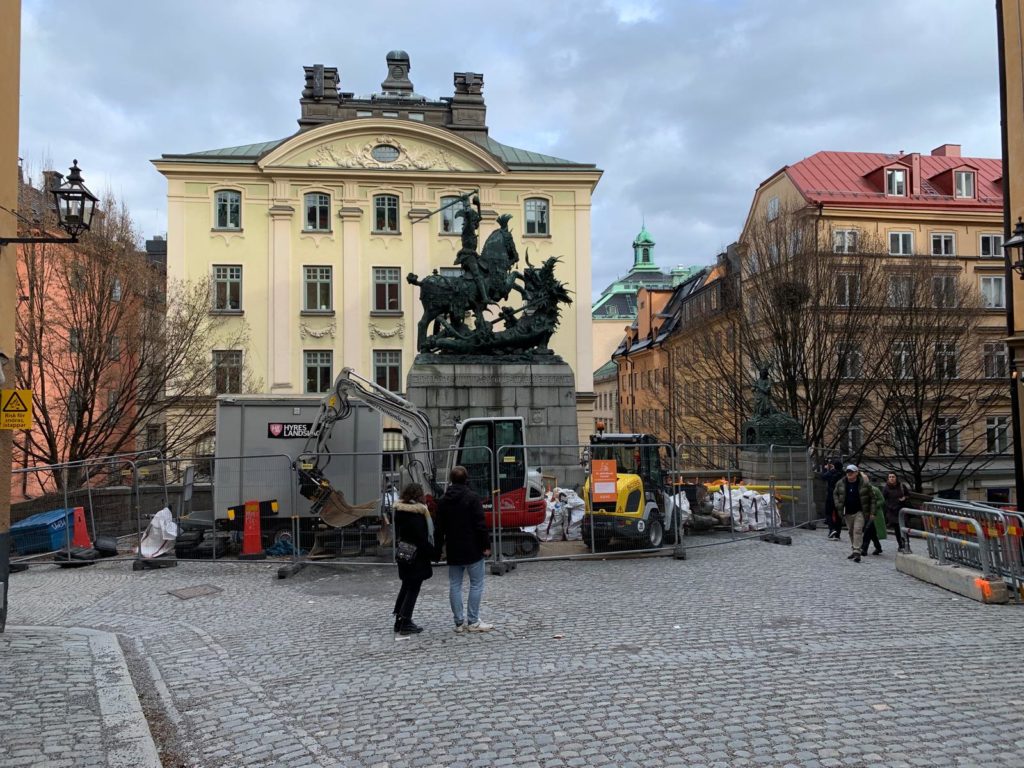
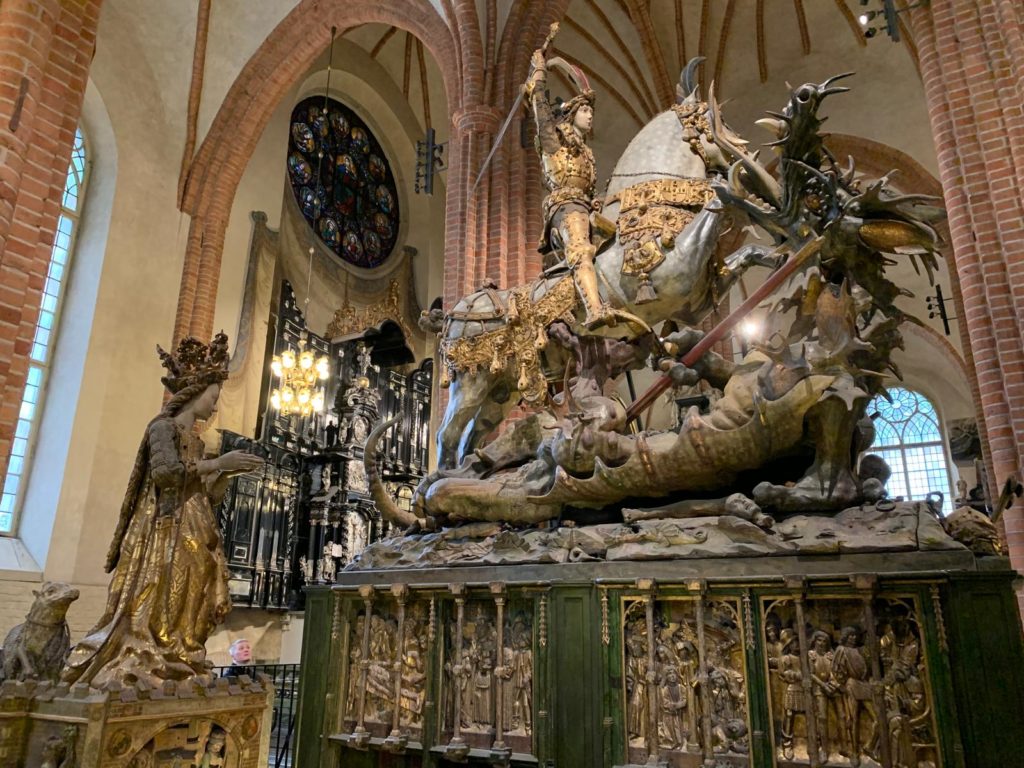
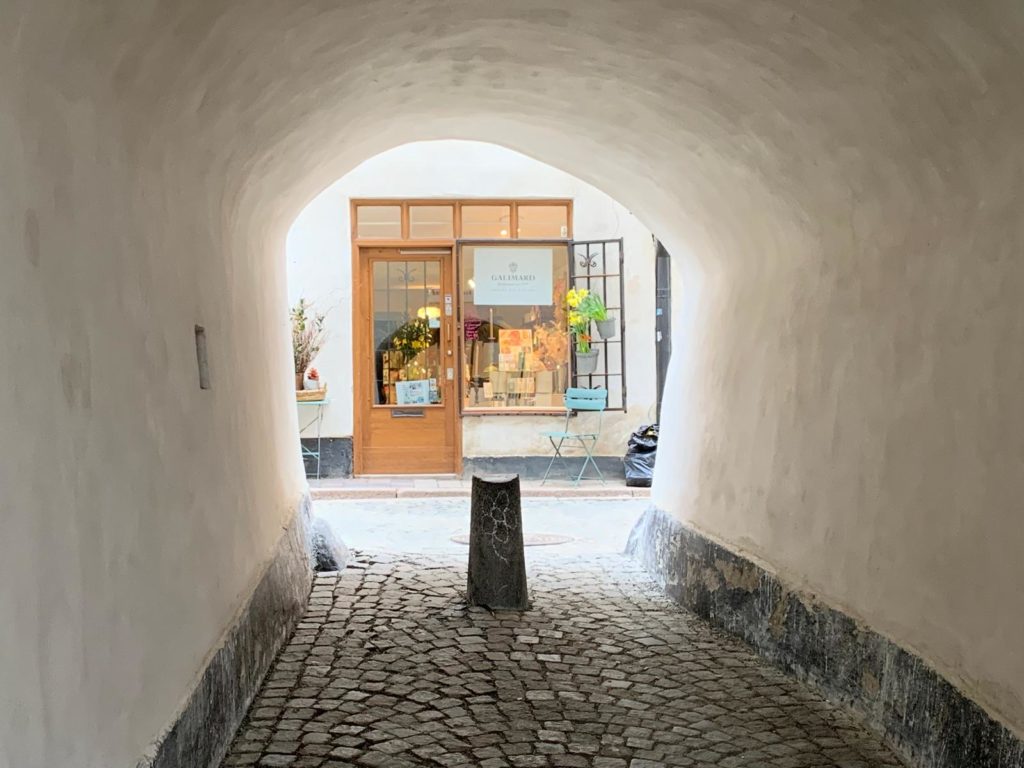
Stockholm: a Brief History
For what is essentially a medieval city at heart, Stockholm’s origins seem surprisingly sudden and mysterious. It was first mentioned around the mid-13th century, but we don’t know much about it at that point. The foundation of Stockholm seems to have had something to do with Birger Jarl, who was a statesman, Crusade-leader and general overachiever. What we do know, however, is that since its foundation, Stockholm has been Sweden’s main city, and connected to trade and government. There’s long been a royal residence here (although the government used to travel with the king so it wasn’t a capital per se). And it was easier to control trade when it was centralised, so it was centralised (to a large extent) here.
Stockholm started out as what is now Gamla Stan, or the Old Town. It was a walled city, which conferred tax as well as defensive benefits. Early Stockholm was a cosmopolitan place: German, Finnish and Danish merchants and citizens have been important here since the start. It wasn’t always a fancy place though. In fact it was long much smaller than other European cities, and could hardly be called a city at all despite being the largest settlement in Sweden. After the death of King Gustavus II Adolphus (1594–1632), Sweden was so embarrassed about the state of Stockholm that they hesitated over whether to invite foreign dignitaries. That and a 1625 fire ended up transforming the city. Private palaces took over from medieval walls. And the medieval shape of neighbouring areas like Norrmalm, Östermalm, Kungsholmen, and Södermalm disappeared in favour of Early Modern town planning.
Today Stockholm has a population of just over a million. Gamla Stan will still be at the heart of many tourists’ experience of the city, but there are equally interesting sights to see in those surrounding areas I just mentioned. Or further afield in the surrounding archipelago. Read on to find out some of what you can fit into a long weekend in Sweden’s vibrant capital!
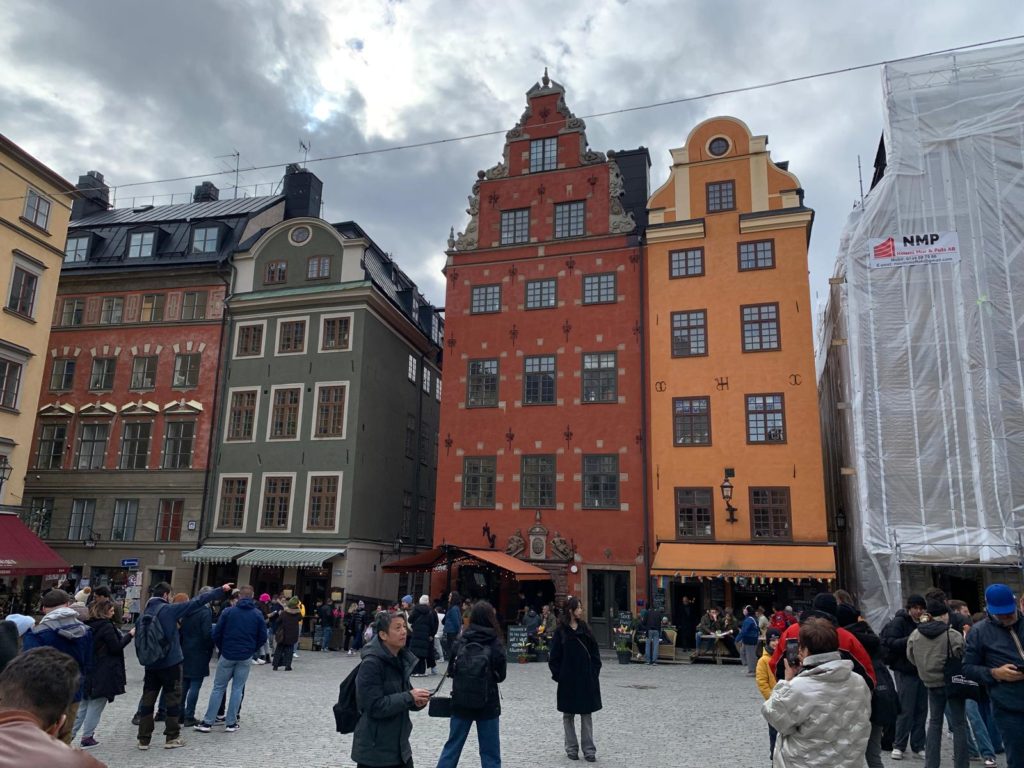
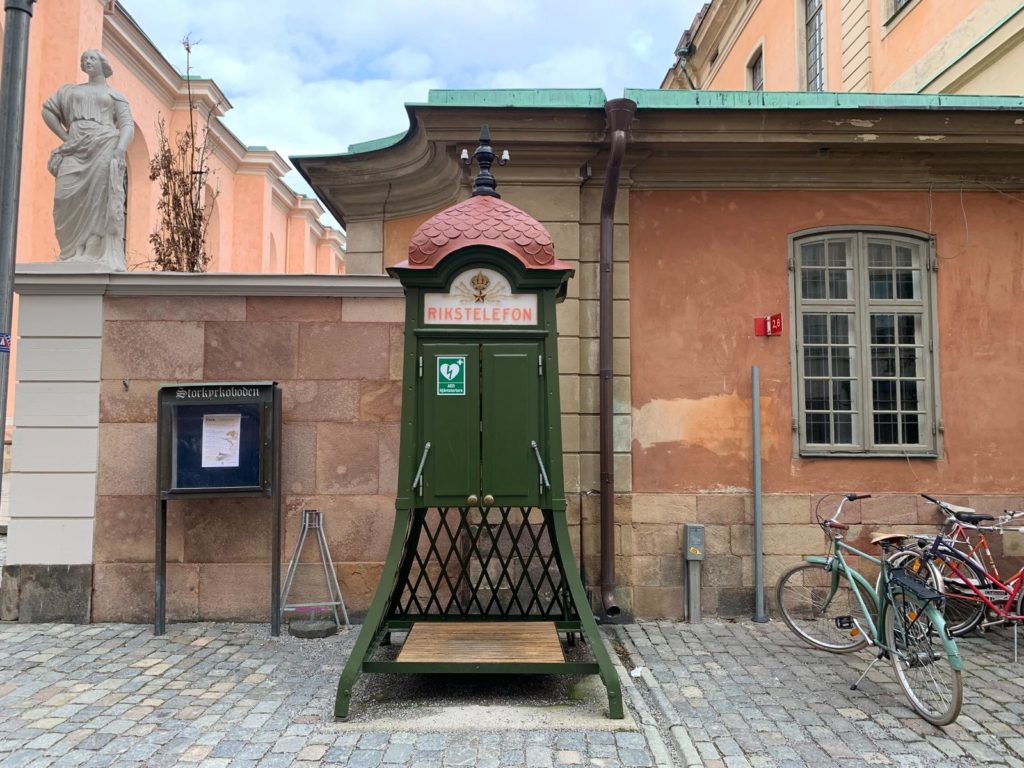
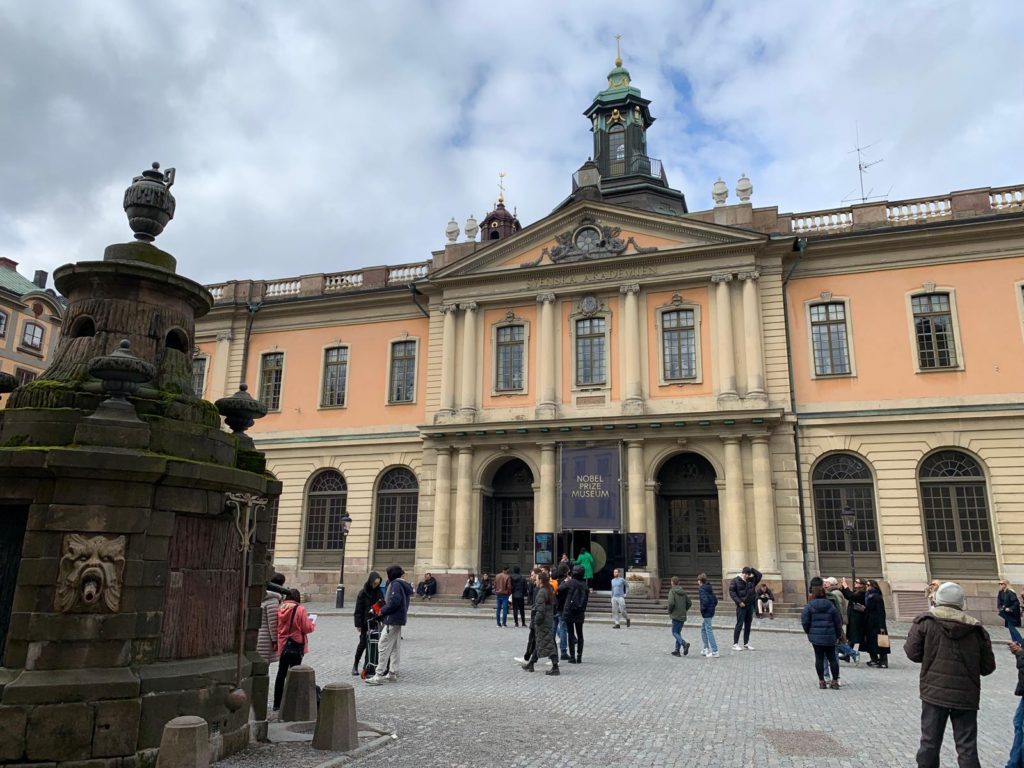
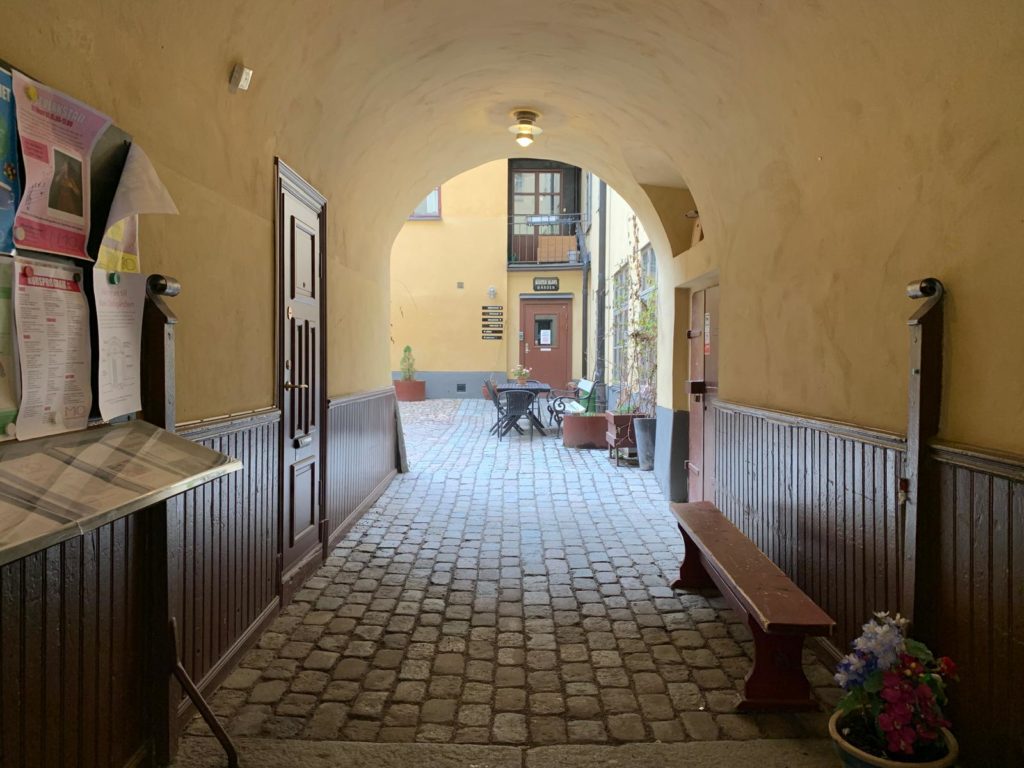
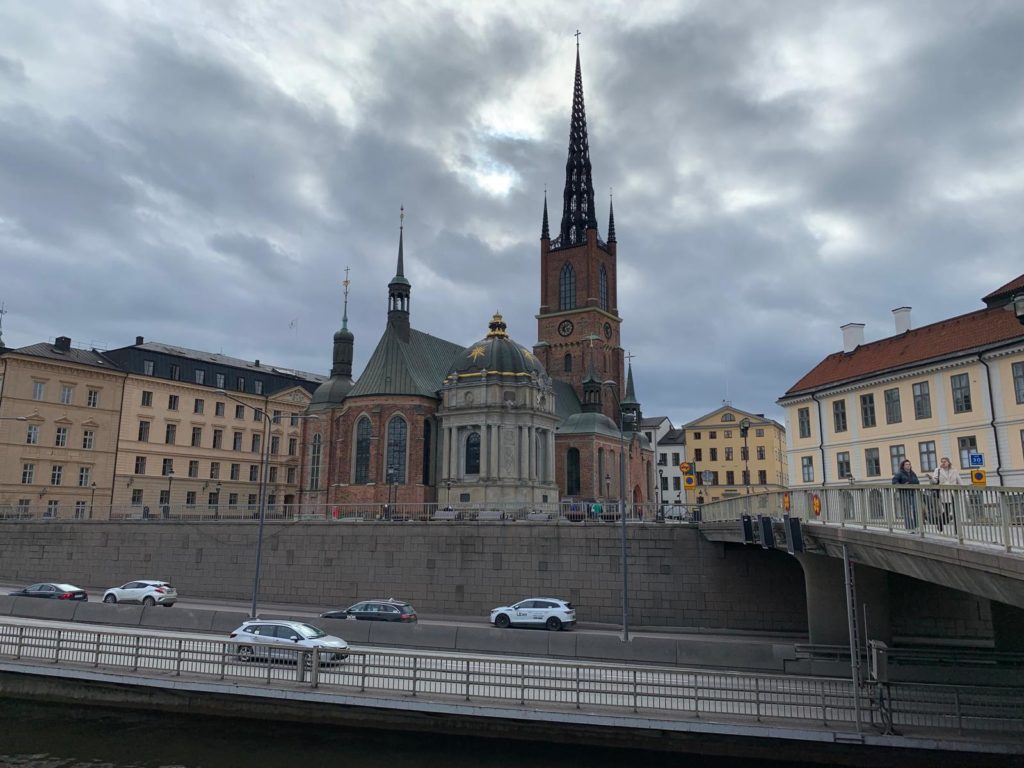
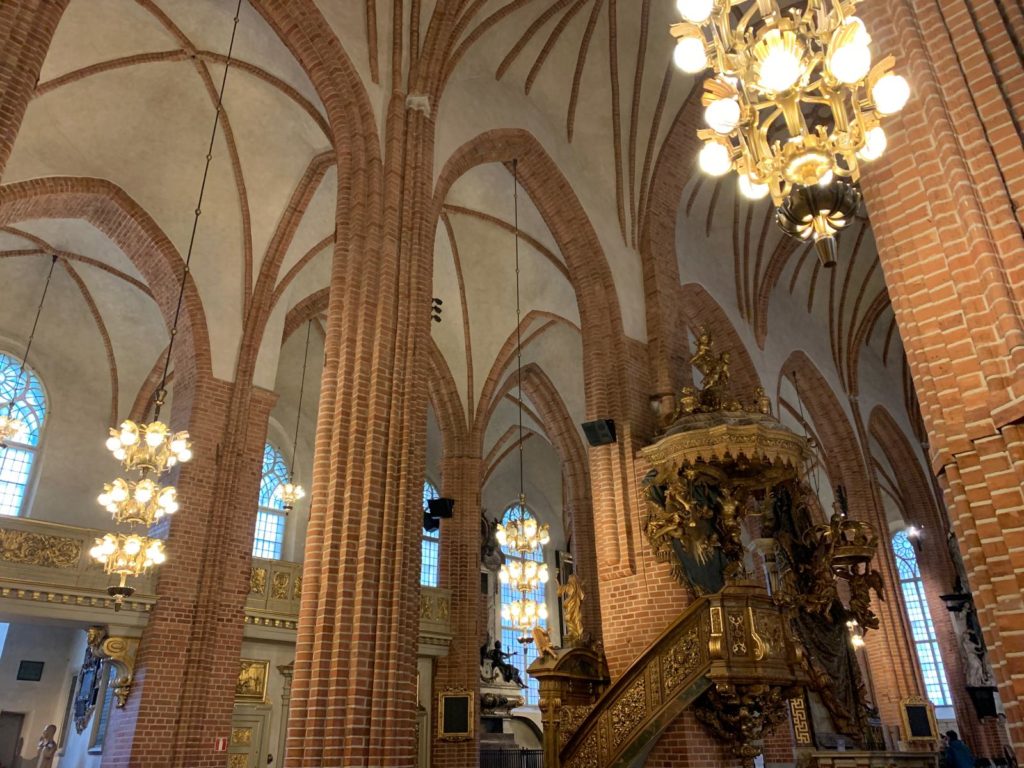
Gamla Stan
Let’s start where Stockholm started: in Gamla Stan. Gamla Stan was originally the island of Stadsholmen: ‘City Islet’ and three connected islands including Riddarholmen (‘The Knights’ Islet’). This is where you will find medieval lanes, a few key sights, and lots of tourist restaurants to satisfy all those cravings for meatballs or herring. It’s worth a good wander: early mornings are lovely before all the shops open up and the tourists pile in. A good walk around will also help you to understand why this spot, between the waters of the Baltic and Lake Mälaren, was a strategic place for a settlement.
A few sights you may want to include on your Gamla Stan wanderings:
- The Royal Palace (Kungliga Slottet). You can’t really miss this, it’s massive and takes up a corner of Gamla Stan. Actually until the Swedish royal family moved their main residence elsewhere relatively recently, it was one of the biggest palaces in the world still inhabited by royalty. It was constructed between 1692 and 1728. There are various museums inside, or you can catch the changing of the guards outside.
- Great Square (Stortorget) and Nobel Prize Museum. You wouldn’t know today that Stortorget was once the site of the Bloody Massacre, with the severed heads of nobles piled up in the square. That was in 1520 on the orders of King Christian II of Denmark. Today it’s a nice central square lined with cafes. On one side is the Swedish Academy, giver-out of Nobel Prizes. It’s thus home to the Nobel Prize Museum as well.
- House of Parliament (Riksdagshuset). Guided tours are possible here but check times in advance.
- Museum of Medieval Stockholm (Medeltidsmuseet). If you really want to encourage your inner history nerd in Gamla Stan, this would be the place. If it wasn’t closed, that is. But it’s moving to a new spot in Gamla Stan so I’ve kept it on the list for future travellers.
- Great Church (Storkyrkan). This is Stockholm’s oldest church, dating to the 13th century. Entrance is paid, but it’s well worth it. The Gothic interior is a surprise after the plain exterior. Look out for the sculpture of St George and the Dragon, a copy of which is on a nearly street.
- Riddarholmen Church (Riddarholmskyrkan). Some places in Stockholm have seasonal openings, and this is one of them so we didn’t get to go inside. But it’s an attractive church from the outside. Originally connected to a Franciscan monastery, it’s been the burial place of Swedish kings for 500 years. It hasn’t hosted regular church services since 1807!
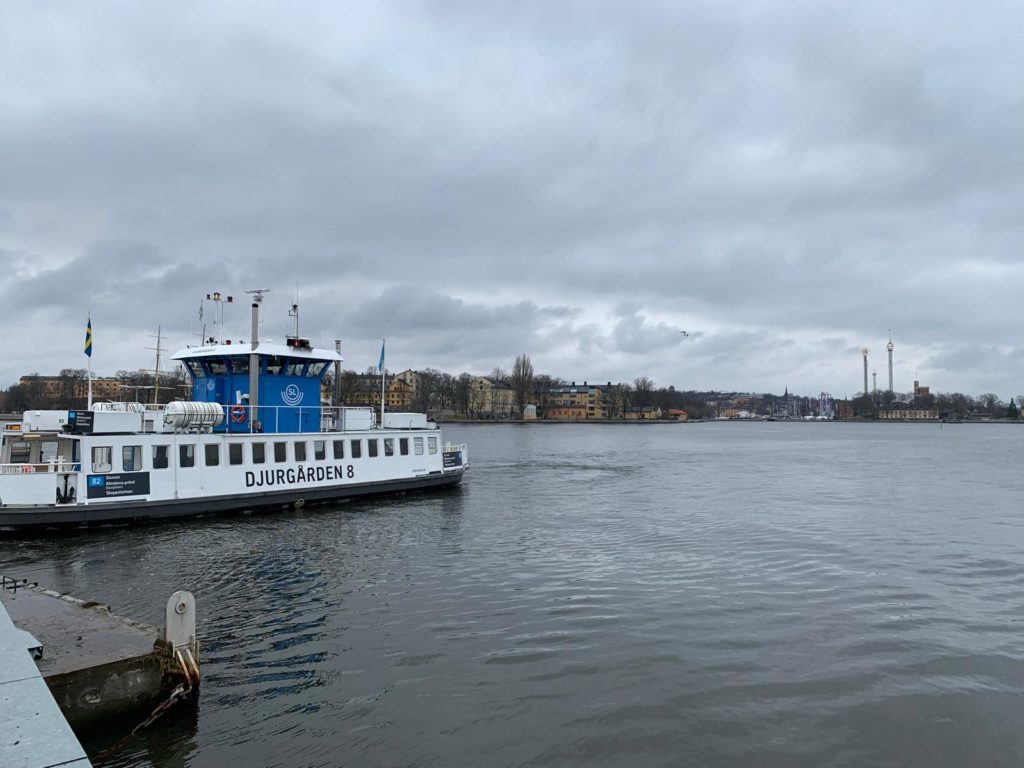
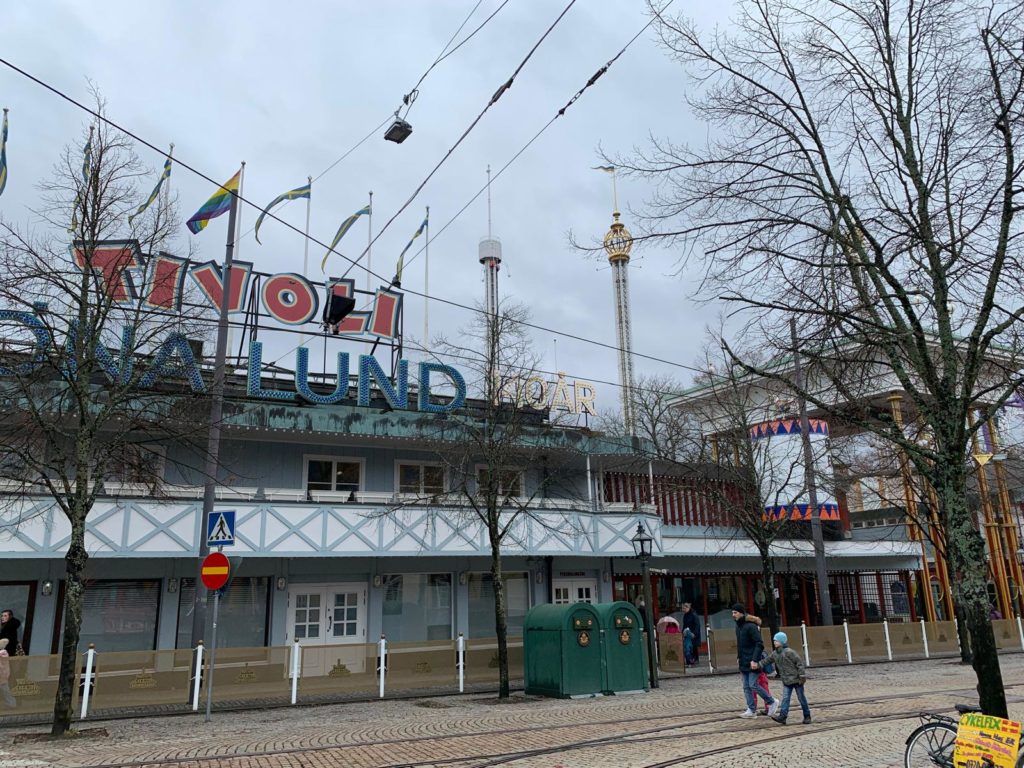
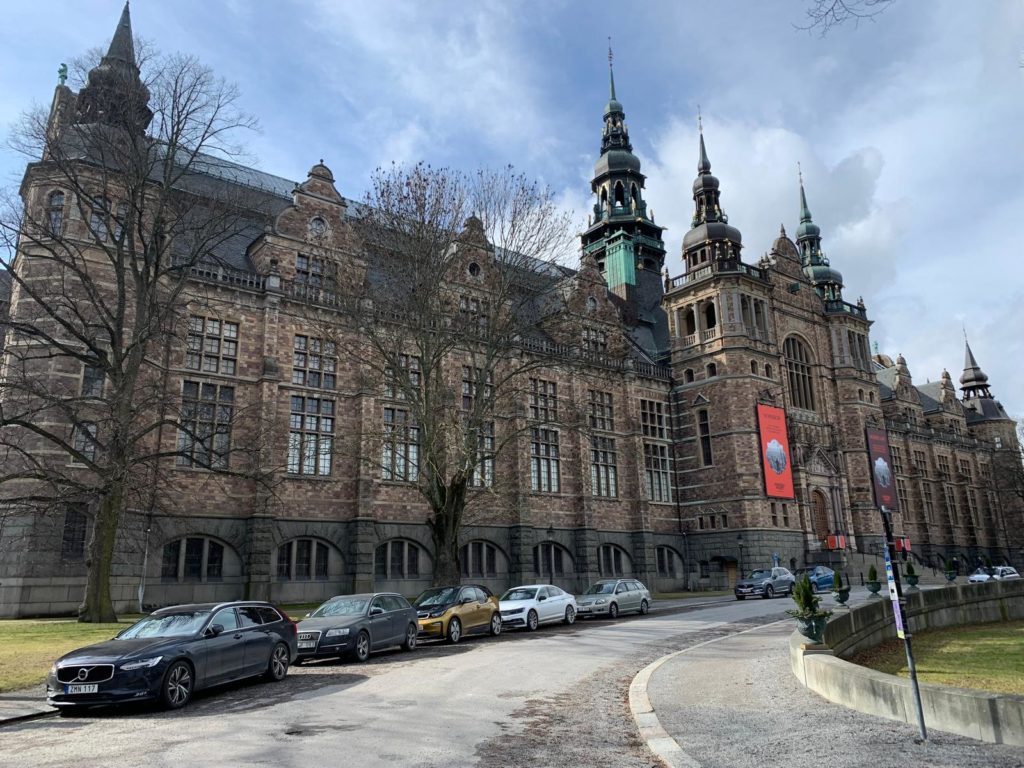
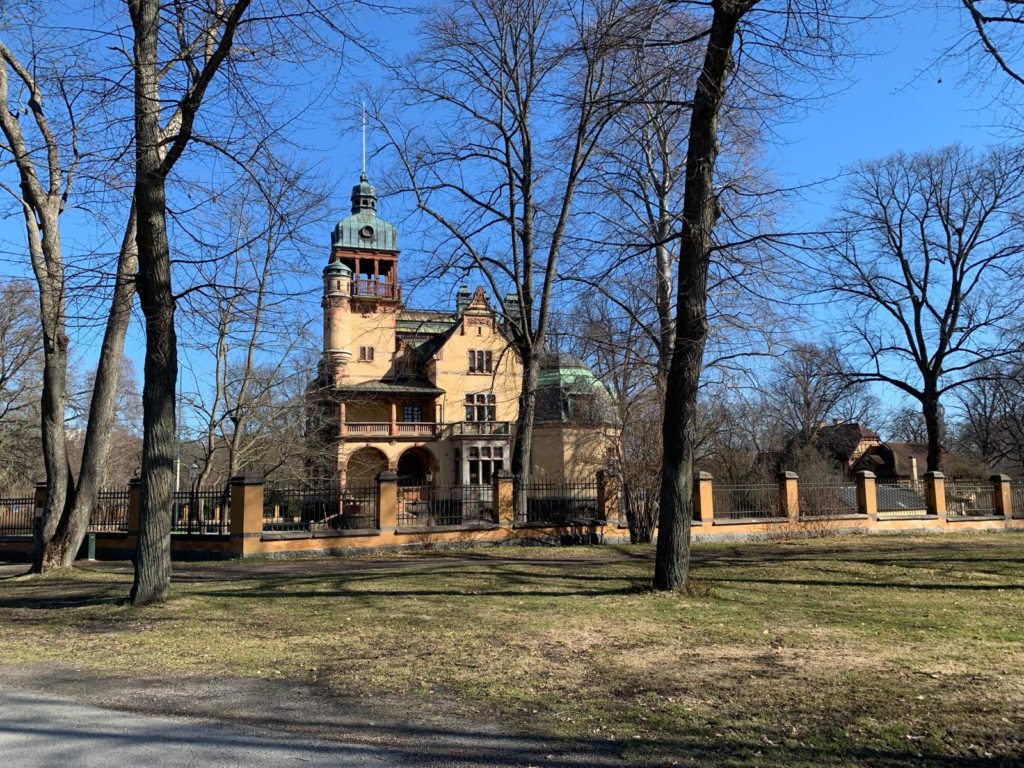
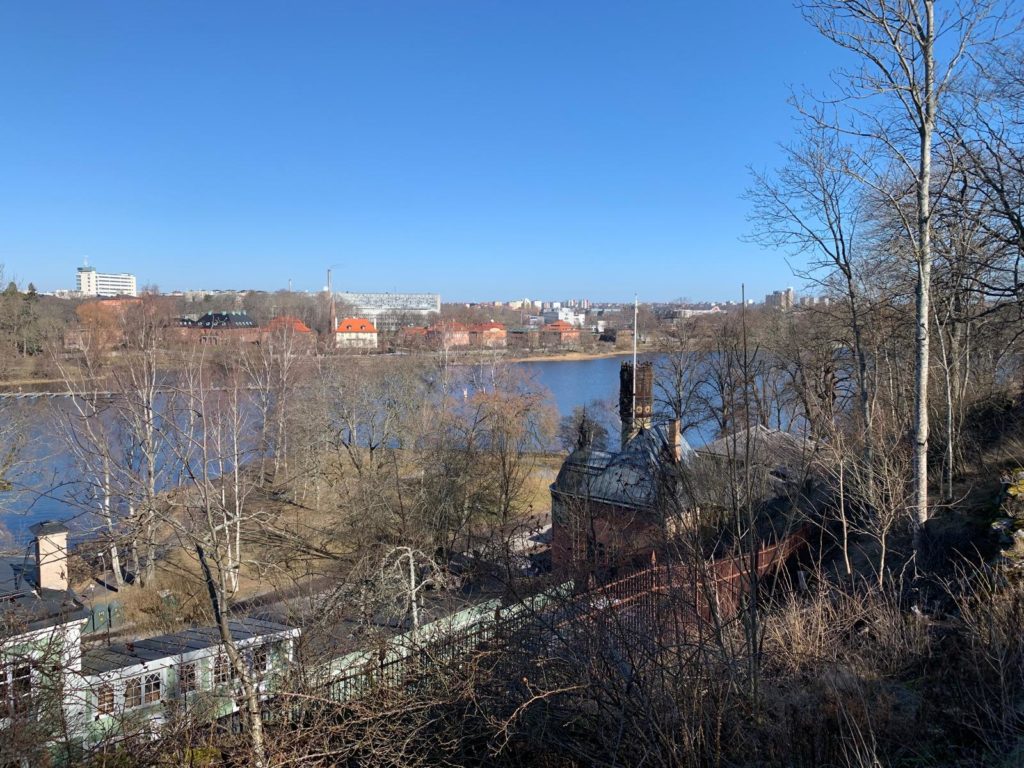
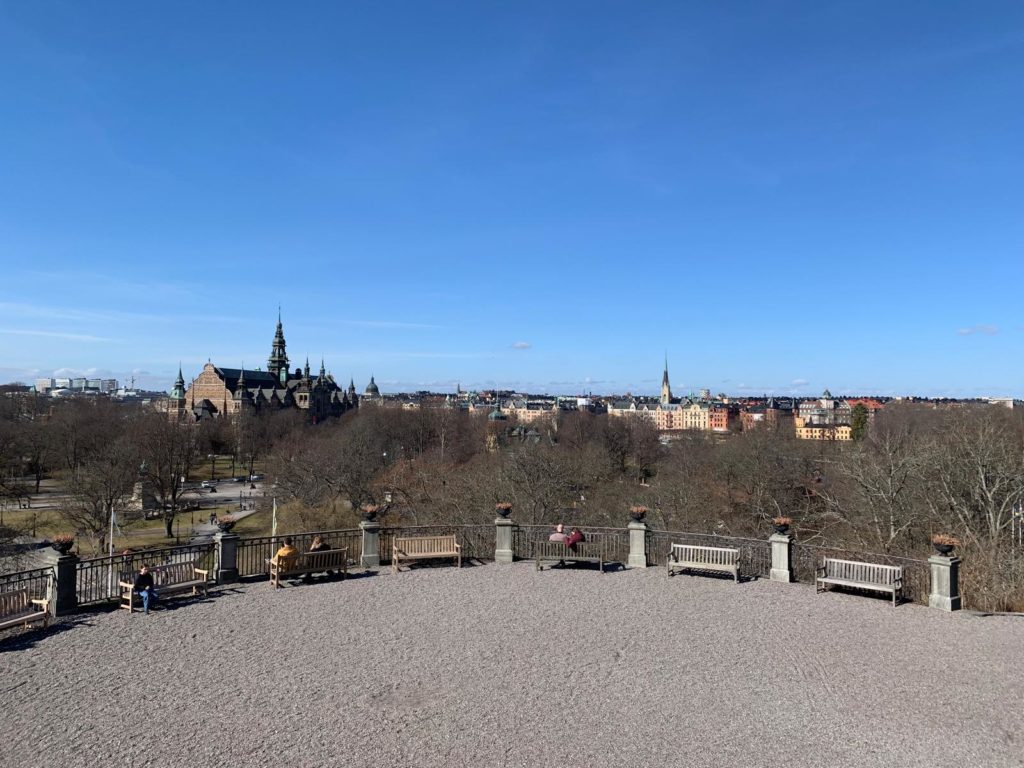
The Museum Islands: Blasieholmen, Skeppsholmen and Djurgården
Sticking close to central Stockholm, the next places you’re going to want to check out are the museum islands of Blasieholmen and Skeppsholmen. A little further off lies Djurgården, which we will come to in a moment. There are several sizable museums on this list so you are best off planning in advance what you want to see and how long you’ve got to see it.
Blasieholmen and Skeppsholmen face off against the palatial buildings of Gamla Stan’s Skeppsbron. They’re best reached from the Old Town on foot. Blasieholmen comes first, and is actually now technically a peninsula. It contains the National Museum. Crossing a narrow bridge, you will reach Skeppsholmen. Look out for the 1905 iron schooner Af Chapman, which functions as a youth hostel. If you’re looking for culture more than bunk bed accommodation, Skeppsholmen also has you covered. There is the Museum of Modern Art (Moderna Museet) which includes an outdoor sculpture garden you can glimpse for free. Or there’s the Swedish Centre for Architecture and Design (ArkDes: currently closed for refurbishment) or Museum of Far Eastern Antiquities (Östasiatiska Museet).
Even bigger, and more culture-packed, is Djurgården (formerly a royal hunting ground). We took a short ferry over from Gamla Stan: you can make contactless payments so it’s very easy. The biggest museum on Djurgården is Skansen, which also happens to be the world’s oldest open air museum (more or less). Set aside a good half day to visit. Or there are these options:
- The Nordic Museum (Nordiska Museet)
- Vasa Museum (Vasa Museet: a recovered ship sunk in 1628, the museum was a real highlight of our trip!)
- ABBA The Museum
- The Viking Museum
- Vrak – Museum of Wrecks: great for families and those who like fun new media in museums
- Prins Eugens Waldemarsudde: a beautiful art museum in a former royal residence
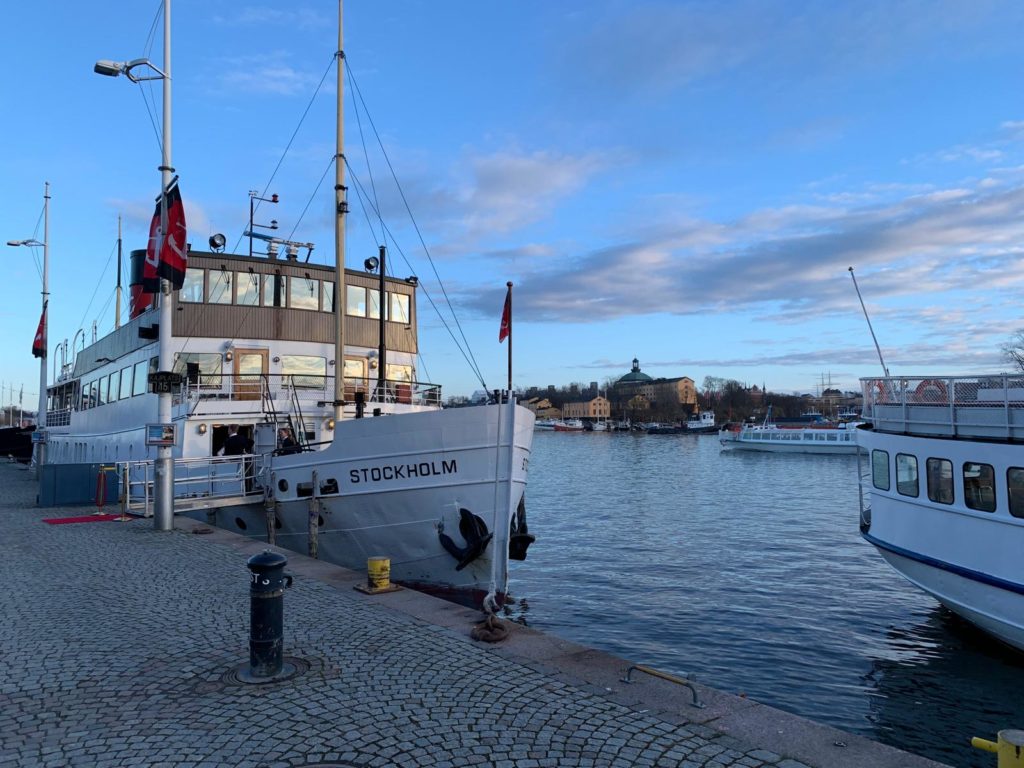
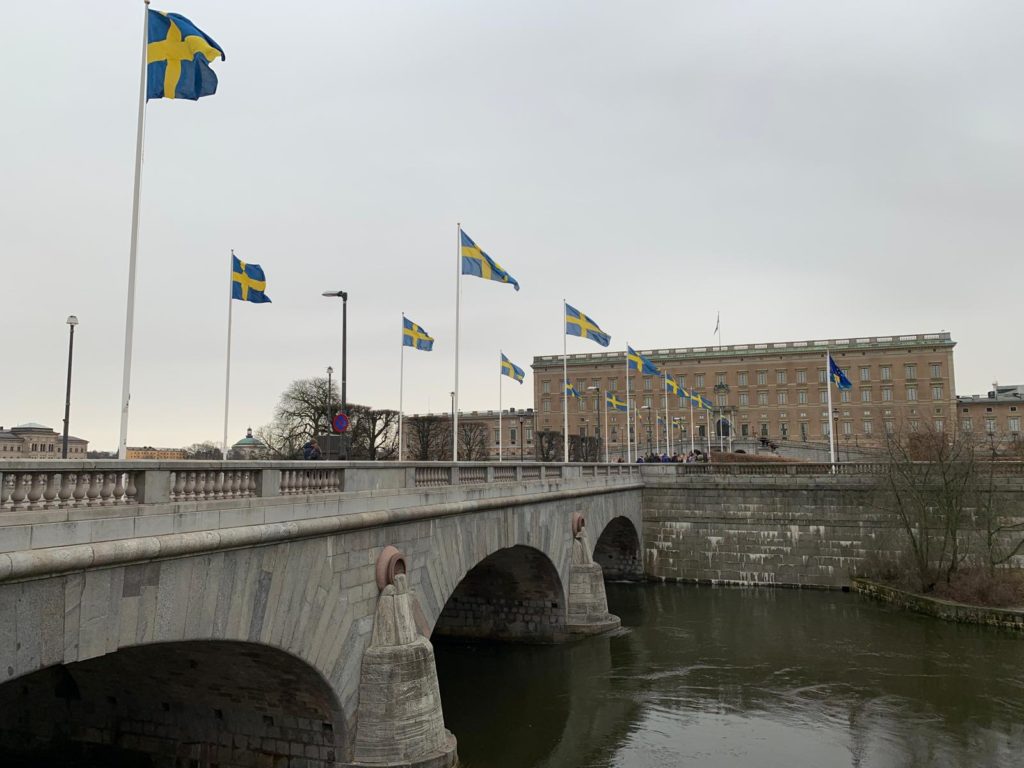
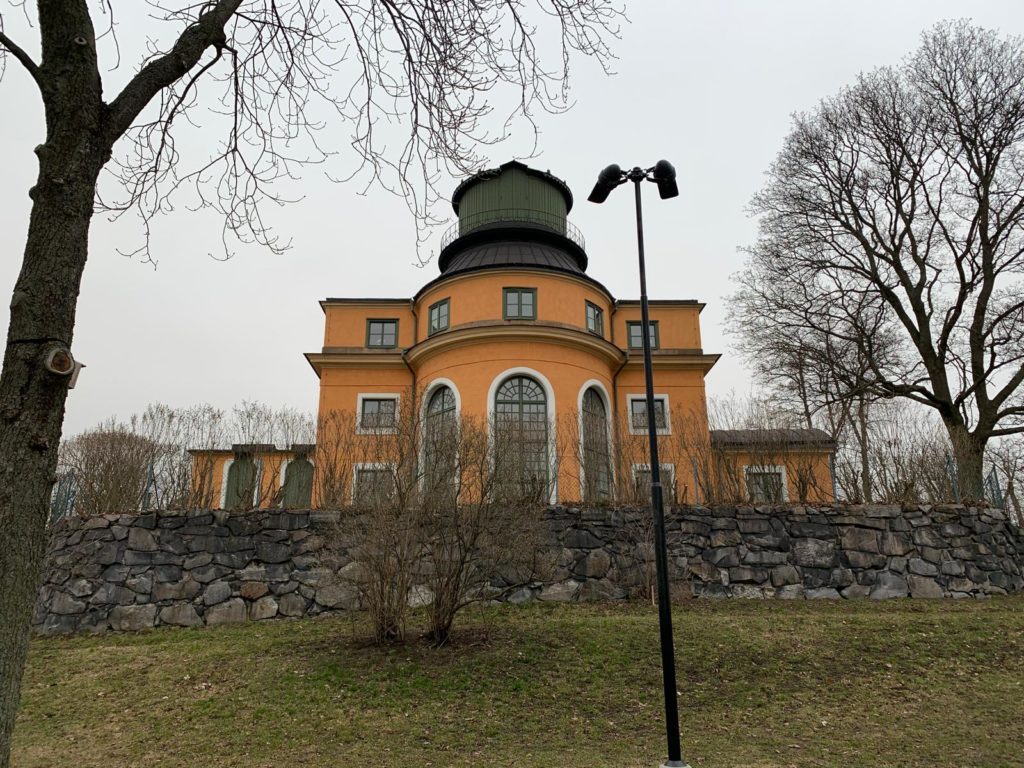
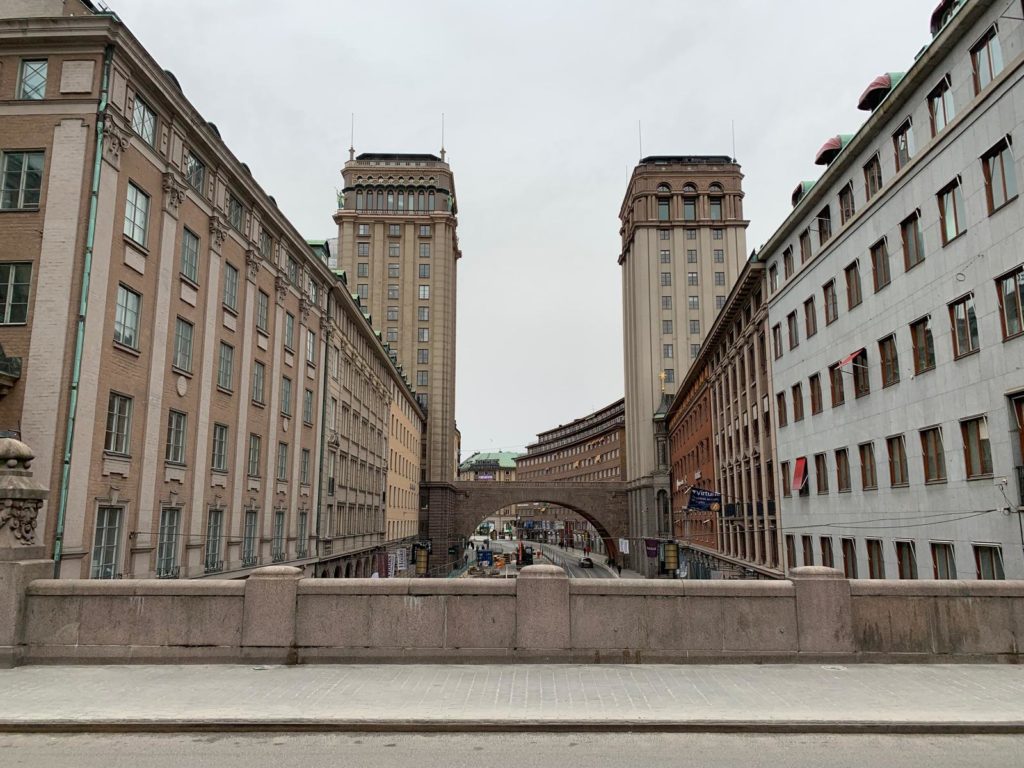
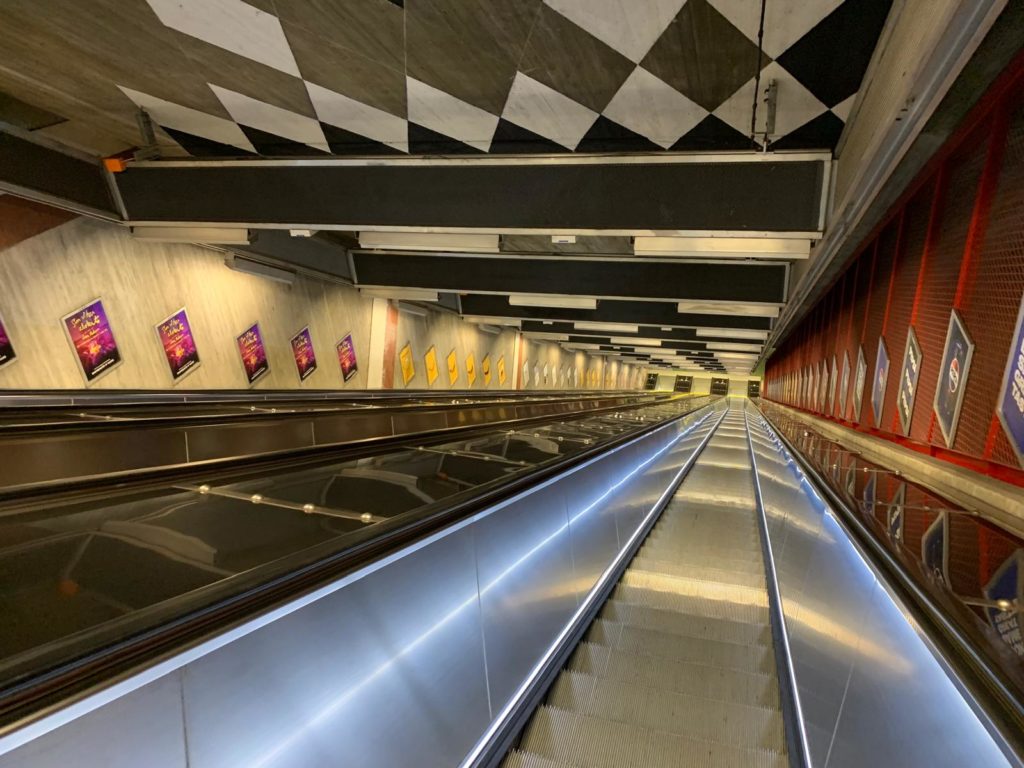
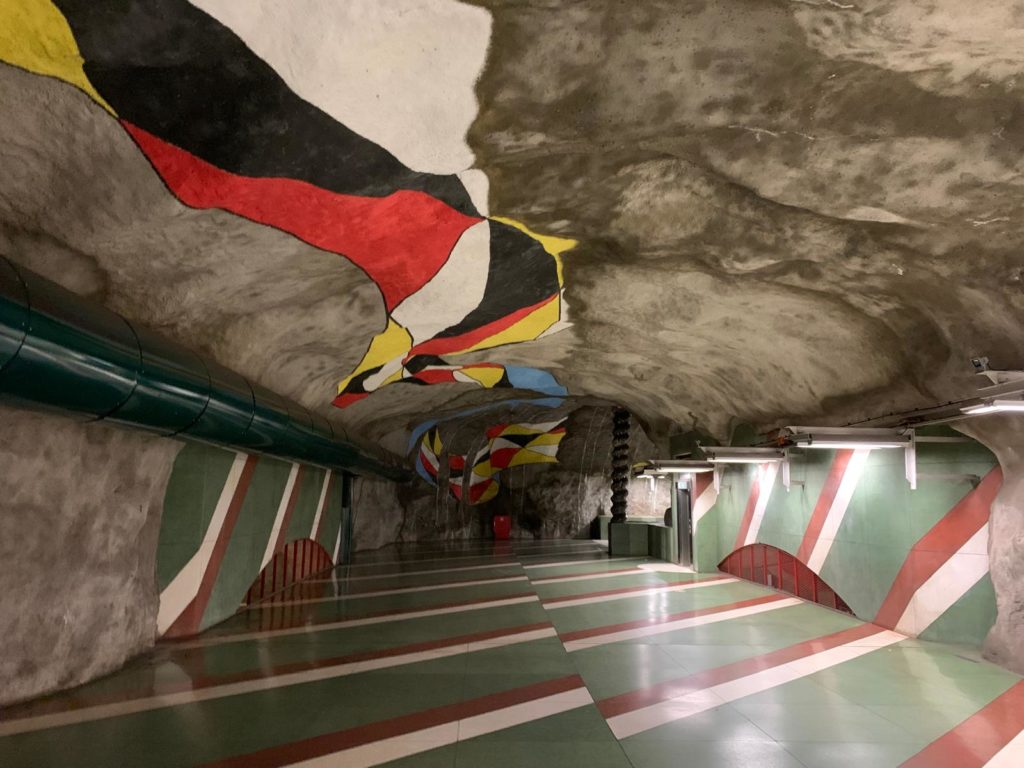
Other Stockholm Sights
Where to start? You could easily plan several long weekends in Stockholm without running out of interesting things to see and do. Here are just a few suggestions, by district.
Norrmalm. Heavy redevelopment in the 1950s and 1960s turned Norrmalm into a modern urban district. This is where you can satisfy any shopping needs, and find less touristy cafes and restaurants. There are also some interesting sights to consider. The main square is Sergels Torg, on one side of which you will find the Kulturhuset cultural centre. Or you can head to Hötorget (Haymarket) for a regular market six days of the week or flea market on Sundays. Further afield, it’s worth a walk to Stockholm Observatory, dating to the 18th century and today part of Stockholm University.
Östermalm. Östermalm is a pleasant part of the city, containing many affluent neighbourhoods. Culture lovers can get behind closed doors at the Hallwyl Museum, a turn-of-the-last-century private collection in its original setting. Or there’s the Swedish History Museum (Historiska Museet), National Maritime Museum (Sjöhistoriska Museet), or National Museum of Science and Technology (Tekniska Museet).
Södermalm. Södermalm is a former working class district, now gentrified and with lovely views and historic buildings. Like Lisbon, its steep hills encouraged creative workarounds, and you can take the Katarinahissen (‘Karatina Lift’) up to the higher levels. Originally built in 1881, the lift reopened last year after a long hiatus. Or down at shore level there is the excellent photography museum Fotografiska. Make sure you stop in the cafe for a fika with great views.
Putting this all in context, there are excursion options beyond the city itself. In the summer season there are plenty of boat trips, including to Viking settlement Birka. Or you might want to head to Drottningholm Palace, the ‘Versailles of Sweden’ and a UNESCO World Heritage site.
To get from A to B, while walking and ferries will do for most of the places I’ve mentioned, it’s worth at least one trip into the Stockholm Metro. Billed as ‘the world’s longest art gallery’, artists have been involved in decorating new stations since 1957.
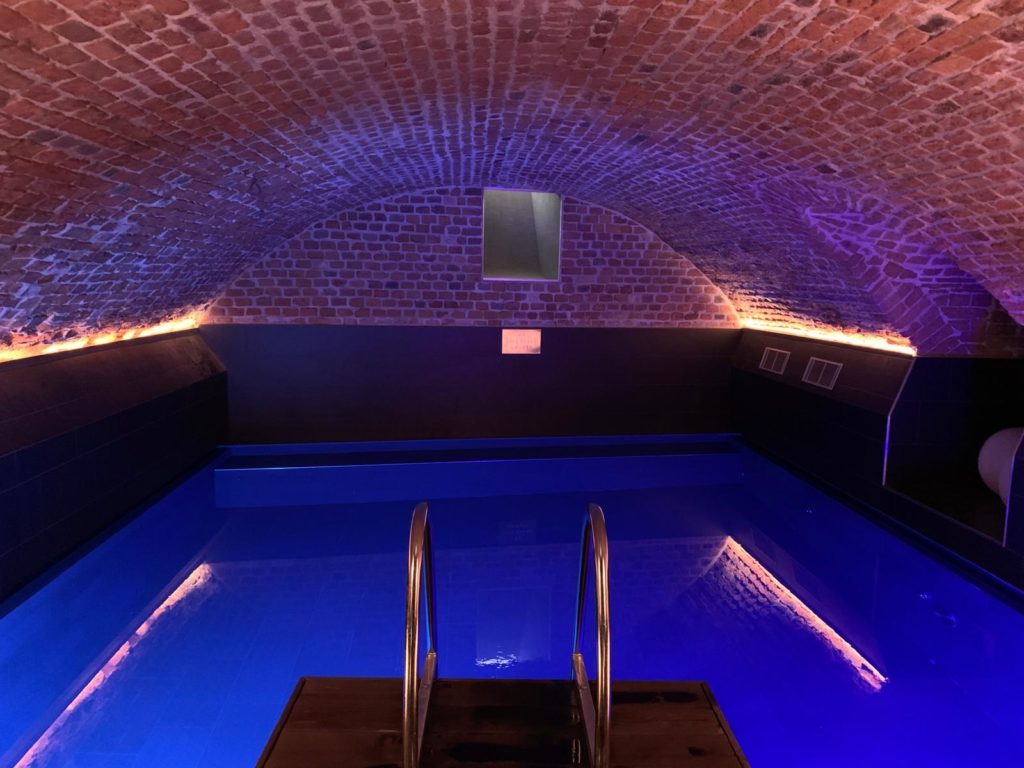
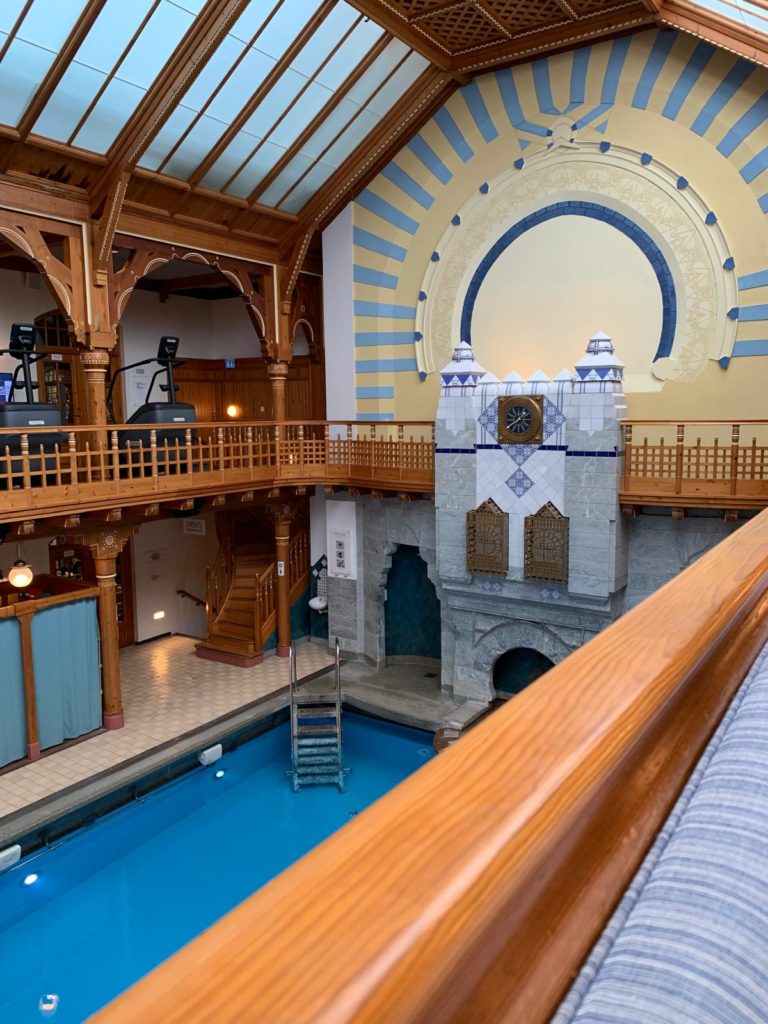
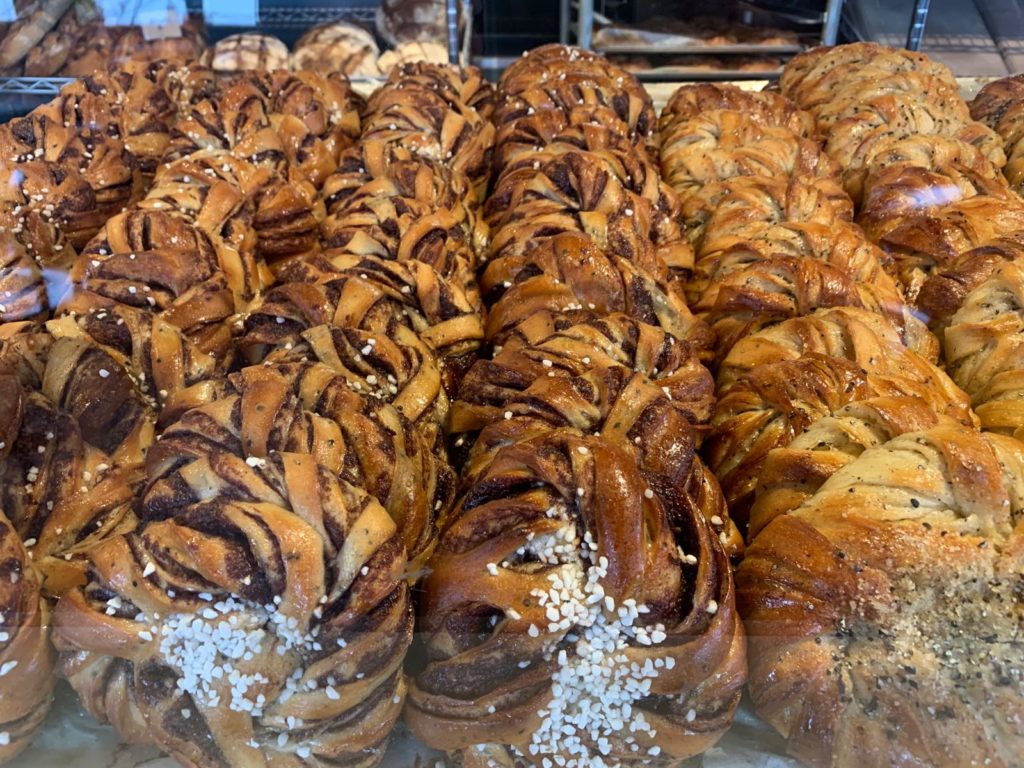
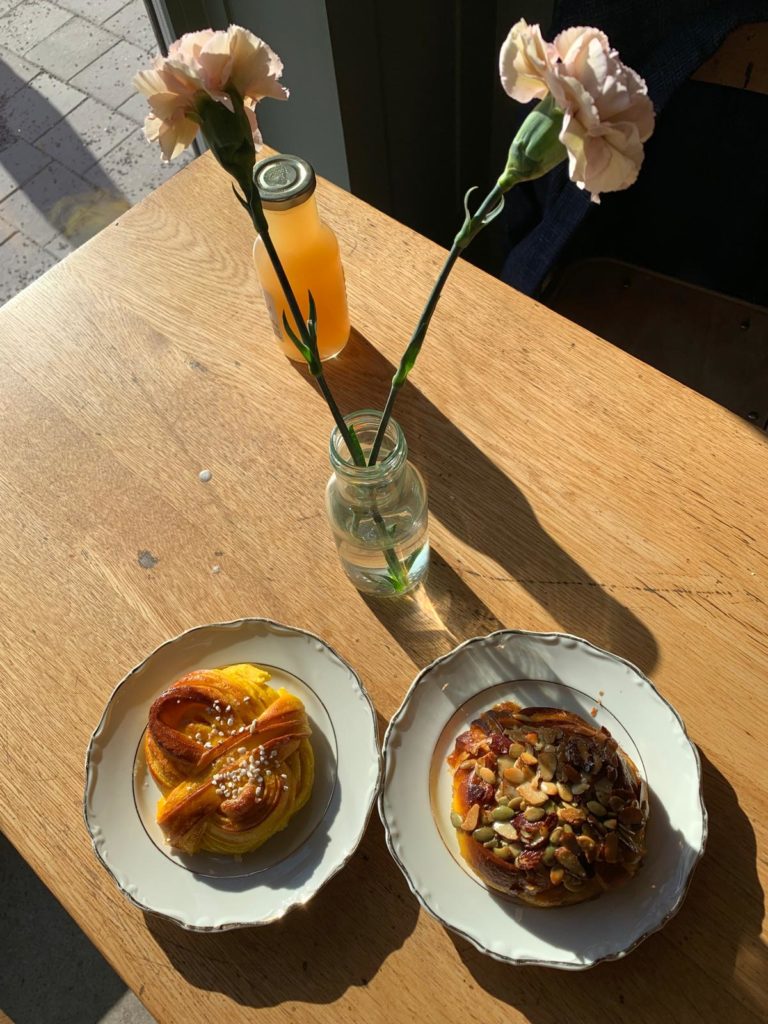
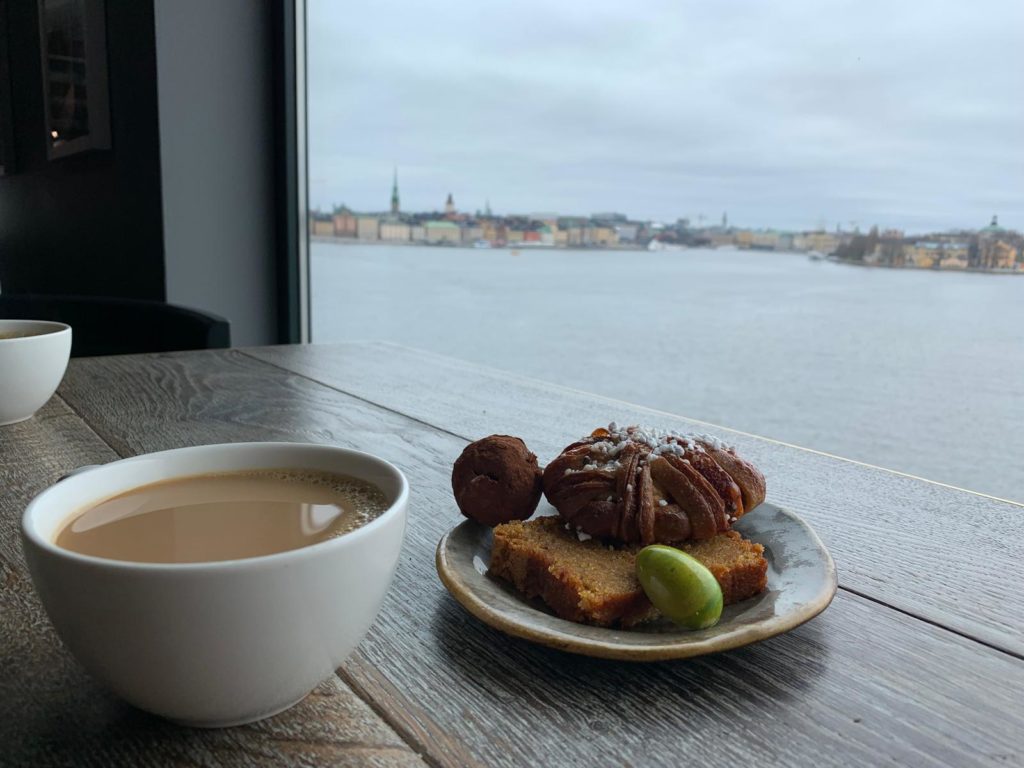
Sauna and Fika
To balance out all that sightseeing, Sweden has the perfect tradition. I’m talking about the traditions of sauna and fika, which can be taken on their own or combined.
I’m not going to pretend you don’t know what sauna means. Finland is sometimes recognised as the birthplace of sauna culture, but it’s very widespread across Scandinavia (and beyond). My top piece of advice for a long weekend in Stockholm is to pick a hotel with its own sauna. We stayed at Hôtel Reisen on Skeppsbron in Gamla Stan (no promotional consideration, just letting you know), which had a sizeable sauna, plunge pool and relaxation space in converted cellars. I very quickly got into the habit of exploring in the morning, having lunch out, then coming back to the hotel for a mid-afternoon sauna. It meant we were relaxed and ready to head out again for evening dinner and drinks, with no tired muscles. Absolute bliss.
If you want to sauna beyond your hotel, there are many options. We spent a few wonderful hours at Sturebadet. You have to go into a shopping centre to find it, but a day pass will get you a scrubbing mitt and hat for the hammam ritual, as well as lunch in the restaurant overlooking the main pool. It’s not cheap, and some spaces are single sex (something to think about if the aim is to spend time with a partner of the opposite sex), but we enjoyed it. Other options include Centralbadet with lovely art nouveau architecture, or Hellasgården a little outside the city.
If you’re hungry from all that sauna time, then it’s time to tell you about fika. This word is likely new to most of you: it means a coffee break. But it’s so much more than that. It’s a social institution, and happens at work, with friends, for business or pleasure. Fika tends to be in the afternoon, but you might find colleagues taking a morning fika break. The default is coffee, but other drinks are acceptable. And you accompany this drink with one of the many wonderful creations of Swedish bakeries: a cinnamon, cardamom or saffron bun, for instance. I mentioned above the cafe at Fotografiska: well they do a fika buffet for a set price so you can try many sweet treats and decide which you like best!
Between sauna and fika, it’s easy to enjoy a well-balanced and restorative long weekend in Stockholm!
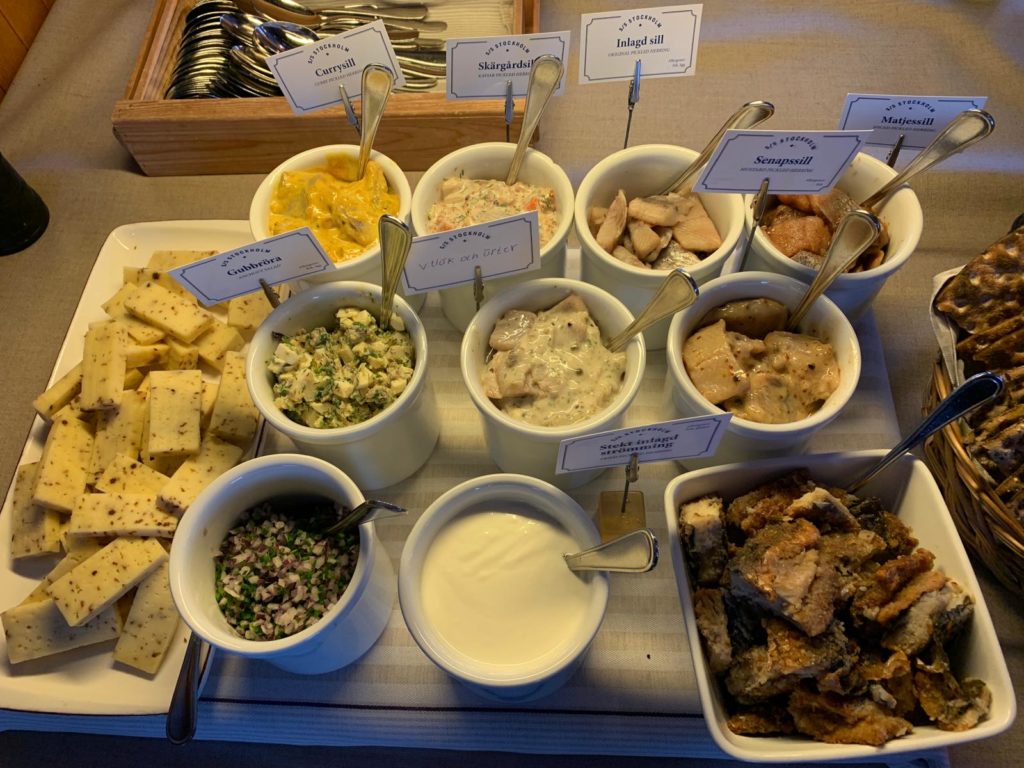
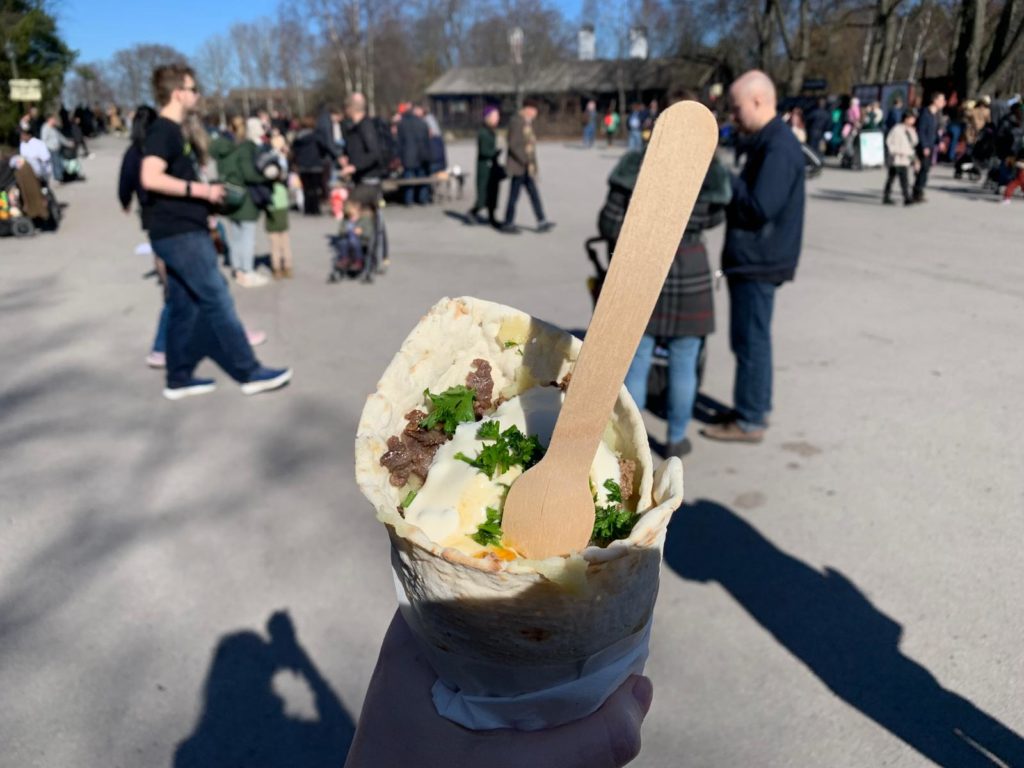
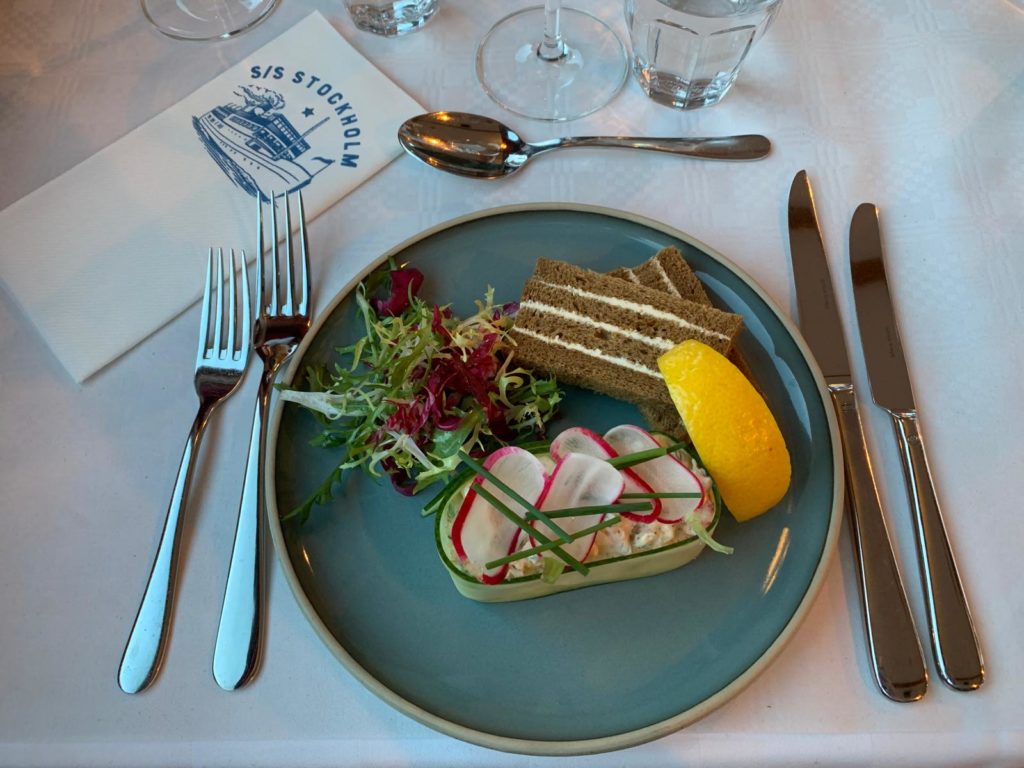
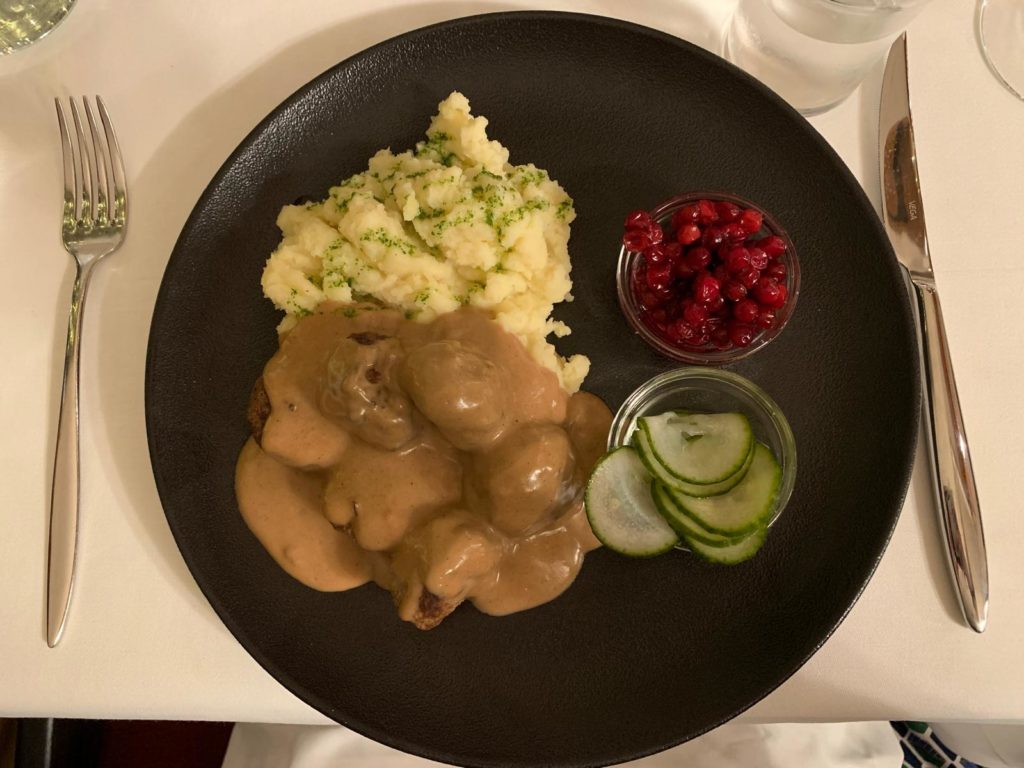
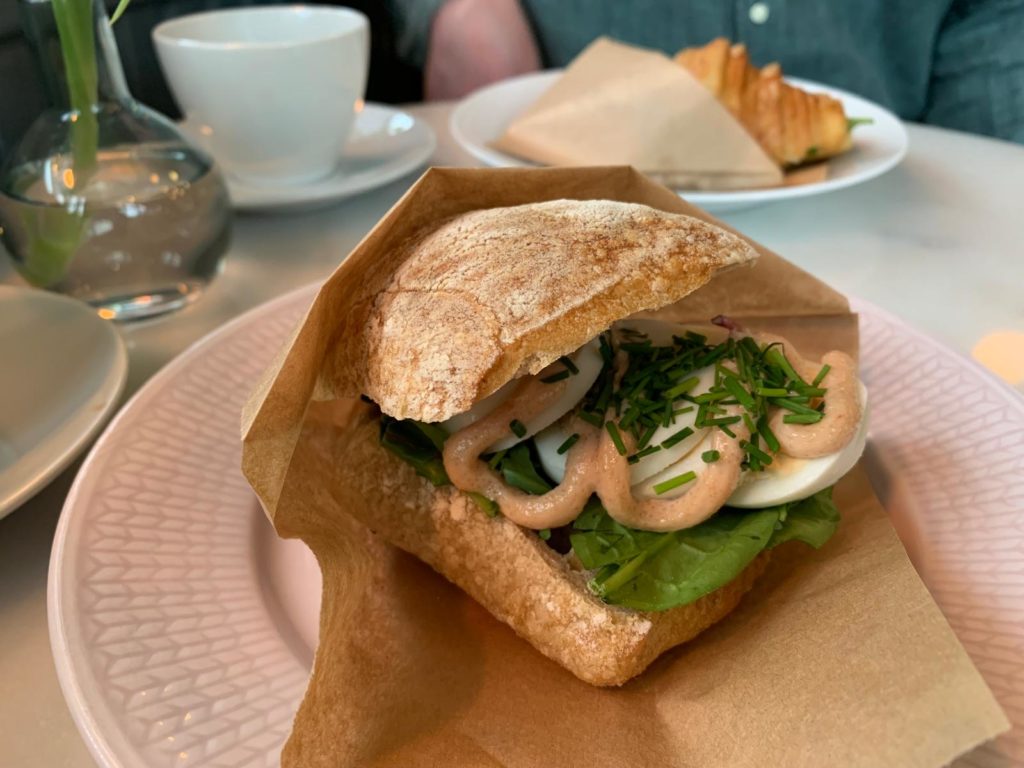
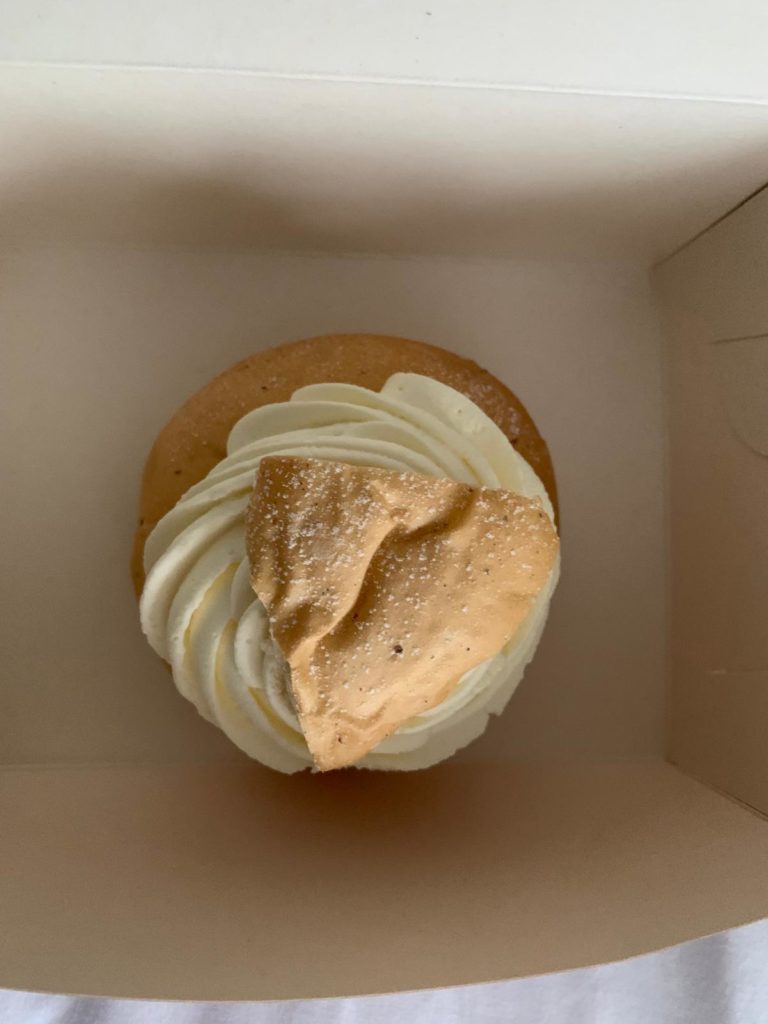
Food & Drink
Hopefully the discussion of fika was enough to whet your appetite: our final section looks at what and where to eat and drink in Stockholm!
As a reminder/disclaimer before we begin, I was in Stockholm over Easter weekend so not all restaurants were open, and those that were and accepted bookings were quite booked up.
Ok, with that out of the way, what should you eat in Stockholm? Well, for a start there are plenty of traditional (sometimes touristy) restaurants which serve the sorts of dishes you imagine in Swedish cuisine. Meatballs are omnipresent, but also rather nice (I like the accompanying lingonberries). Toast Skagen is a common starter: it’s a shrimp salad on fried bread. There are plenty of herrings, sometimes elk, reindeer or other Nordic meats, and some delicious fish dishes.
In terms of where to eat, don’t overlook dinner cruises. We set out around the archipelago on only the second day of the season, so had a boat almost to ourselves and attentive service. Or there are loads of regular restaurant options in Gamla Stan (like Den Gyldene Freden). Outside of the old town you might like to try Ekstedt or Restaurang Prinsen. If you’re better organised than me, there are a lot of Michelin-starred restaurants to try to book. At the other end of the spectrum, I loved a pillowy, juicy elk flatbread from a stall at Skansen.
When it comes to drinks there are lots of lovely spots, particularly those overlooking the water. Or you can go in a different direction and try out cellar bars like Under Misteln just off Stortorget. For cocktails and jazz we didn’t need to go any further than our own hotel, whose Bar Brahe has its own entrance, travel-inspired tipples, and weekly jazz.
That’s it from me! I hope you enjoy your own long weekend in Stockholm: please share your own tips in the comments!
Trending
If you see this after your page is loaded completely, leafletJS files are missing.

